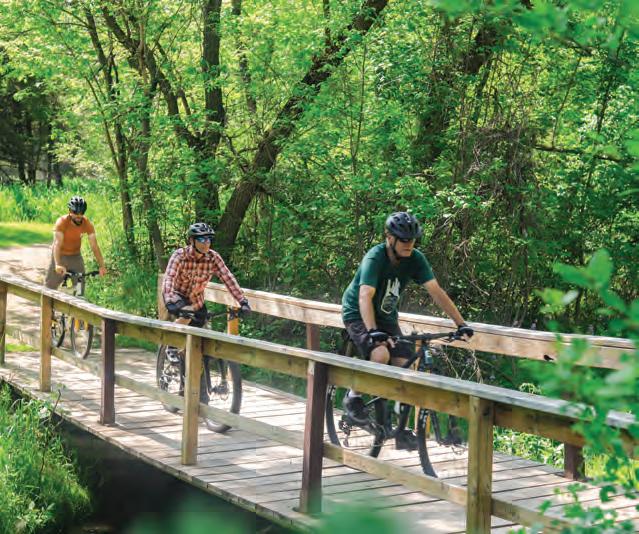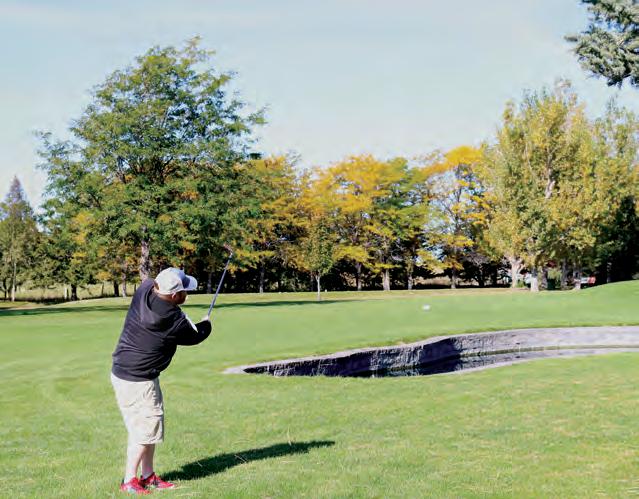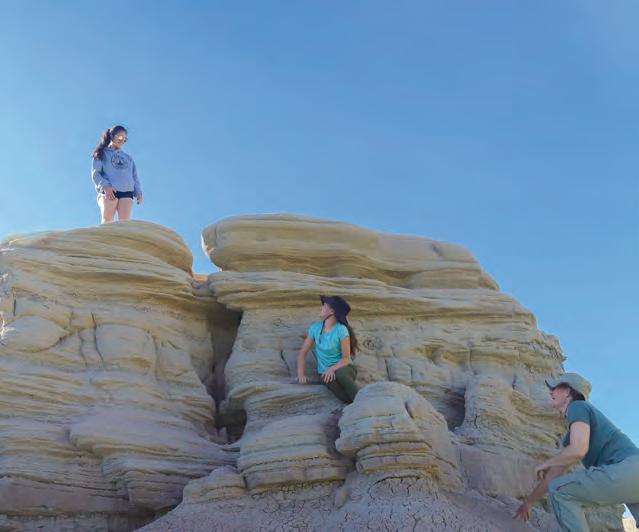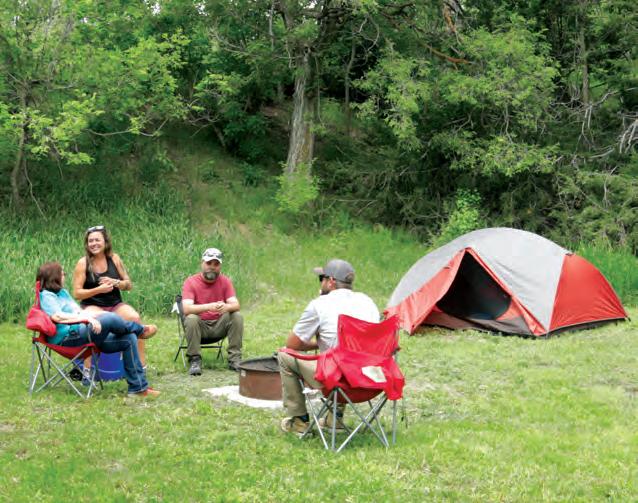














Katie Schultis, a fourth-year University of Nebraska Medical Center student, is from Diller, a town of 250 in southeast Nebraska. Like many rural areas, Diller faces a critical shortage of health professionals.
“Growing up, I was well aware of the limited access many communities in our state have to the care they need and deserve,” Schultis says. “That’s why, when my education is complete, I’ll be going home.” Schultis is not alone. Nearly 60% of the physicians, dentists, pharmacists and physician assistants practicing in Greater Nebraska – outside of the Omaha and Lincoln metro areas – were educated at UNMC and received training at Nebraska Medicine, the university’s primary clinical partner. But there is still work to be done. UNMC and Nebraska Medicine, a leading American academic health system, are committed to addressing the growing health care needs of all Nebraskans - UNMC, as the state’s only public sciences university, and Nebraska Medicine, as a major clinical partner of UNMC and the primary teaching hospital for the state.
In collaboration with the University of Nebraska at Kearney, UNMC has grown in central Nebraska, adding new facilities and expanding programs. This includes a $95 million Rural Health Education Building and medicine, nursing, pharmacy and public health programs.
The expansion builds upon the success of the Health Science Education Complex, which opened in 2019 through a partnership between UNMC and UNK. Due for completion in late 2025, the new project will increase the number of health professions students training in the region by more than 250% and help fill shortages in medical professions around Nebraska.


Kaitlyn Schultis & Edson DeOliveira UNMC College of Medicine, Class of 2024
“The combined campus in Kearney will be the largest interdisciplinary health care rural training campus in the United States,” UNMC
Chancellor Jeffrey Gold, MD, says. “It’s just another way that Nebraska is leading the world.”
When fully operational, the Rural Health Education Building and existing Health Science Education Complex will have an annual economic impact estimated at $34.5 million.
Nebraska Medicine, as the primary clinical partner of UNMC, is dedicated to providing health care for all Nebraskans. As a non-profit, integrated health system, its providers care for patients from every county in the state.
Across Nebraska, 70 specialty and primary care clinics offer a wide range of services. This includes 20 satellite clinic locations in towns such as Alma, Broken Bow, Cambridge, Columbus, Cozad, Grand Island, Hastings, Kearney, North Platte and York.
Nebraska Medicine – like many hospitals across the state – relies on UNMC to grow our health care workforce and on students like Schultis.
“Medical students just like me, from rural communities throughout Nebraska, are getting their education at UNMC and training at Nebraska Medicine,” she says. “And like me, they’ll be going home to provide much-needed care.”
While expanding Nebraska’s health workforce is crucial, it’s only one step UNMC and Nebraska Medicine are taking in and across Nebraska. Explore this “once-in-a-generation” opportunity for Nebraska at unmc.edu/next.


Communities throughout Nebraska receive care from health care providers educated with us.

If you’re getting health care anywhere in Nebraska, there’s a good chance your provider was educated at the University of Nebraska Medical Center, and trained with Nebraska Medicine. We’re proud of the knowledge and training we provide countless health care professionals, who settle in communities throughout our state and improve the lives of people and their families.

Learn more about how we’re transforming the lives of Nebraskans at unmc.edu/next.


























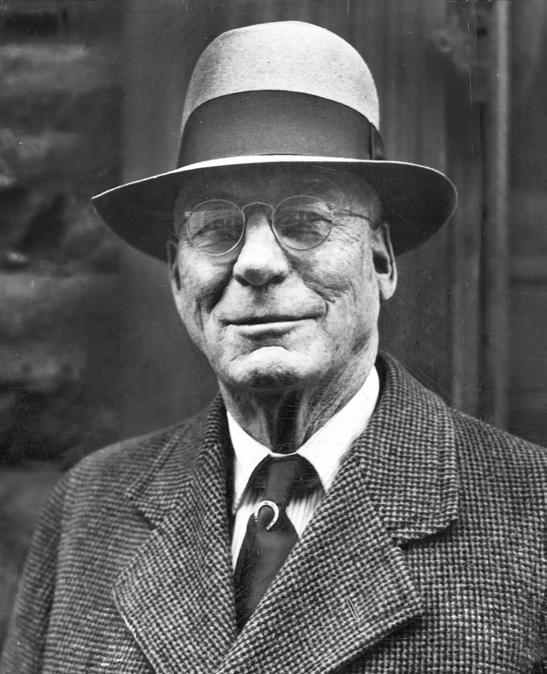
30
38
MARCH-MAY 2024
64
The author, new to farm life, couldn’t grasp what had just emerged after a calf was born. The sight froze her, until her husband yelled for help.
Essay and photographs by Nicole Louden
OMAHA STRONGMEN
Chapter 1: The Cowboy Mayor
Twenty-year Omaha Mayor “Texas Jim” Dahlman earned his reputation for fearlessness, and the respect of a crime boss, by hunting lost cattle in a Sandhills blizzard.
By Ron L. Jackson, Jr.
Chapter 2: The Old Gray Wolf
Crime boss Tom Dennison ruled for decades through terror and cunning, and James Dahlman was his hand-picked mayor.
By Ron Soodalter
Sandhill cranes make a balletic show while pair bonding, entwining their long necks and calling to one another.
By Tom Hess

Lewellen, pg. 62
Gordon, pg. 30
Ellsworth, pg. 24

North Platte, pg. 22
Fremont, pg. 18
Wahoo, pg. 17
Kearney, pg. 64
Letters,
A successful businessman invests in rock-n-roll nostalgia; the Saunders County Museum in Wahoo displays a letter a Titanic survivor wrote; a Fremont tea shop honors the memories of its owner’s family.
Test your recall of these symbols of Nebraska.
A Nebraska Life reader treasures the lessons he learned while fishing. Learn how you can be published, too.
Lime is just in time to transform and freshen these dishes.
Nebraska poets prefer to experience storms nowhere else but in their homeland
Omaha’s Henry Doorly Zoo & Aquarium offers adults-only, after-hours access on Thursday nights throughout summer.
Alan J. Bartels meets new friends in an uncrowded Sandhill crane-viewing spot.
Gretna, pg. 16
Omaha, pg. 30, 38, 56

The Platte River is the stage on which sandhill cranes dance with their lifelong mates for all the world to see.

Flat Water


MARCH-MAY 2024
Volume 28, Number 2
Editor & Publisher
Chris Amundson
Associate Publisher
Angela Amundson
Creative Director
Darren Smith
Senior Editor
Tom Hess
Senior Designer
Jennifer Stevens
Production Assistants
Victoria Finlayson
Lauren Warring
Advertising Sales
Marilyn Koponen
Subscriber Services
Carol Butler, Janice Sudbeck
Nebraska Life Magazine
c/o Subscriptions Dept. PO Box 270130 Fort Collins, CO 80527 1-800-777-6159 NebraskaLife.com
SUBSCRIBE
Subscriptions are 1-yr (6 issues) for $30 or 2-yrs (12 issues) for $52. Please call, visit NebraskaLife.com or return a subscription card from this issue. For fundraising and group subscription rates, call or email subscriptions@nebraskalife.com.
ADVERTISE
Advertising deadlines are three months prior to publication dates. For rates and position availability, please call or email advertising@nebraskalife.com.
CONTRIBUTE
Send us your letters, stories, photos and story tips by writing to us, emailing editor@nebraskalife.com, or visiting NebraskaLife.com/contribute.
COPYRIGHT
All text, photography and artwork are copyright 2024 by Flagship Publishing, Inc. For reprint permission, please call or email publisher@nebraskalife.com.

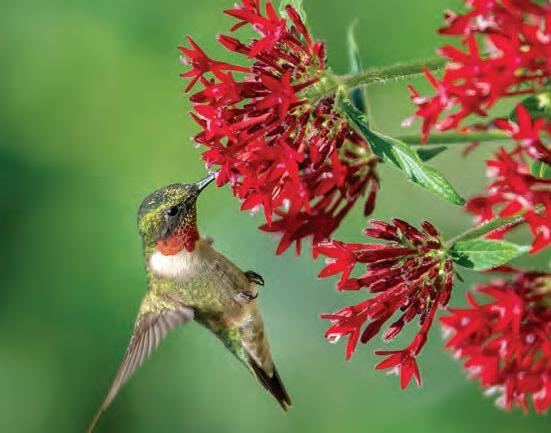







Lockwood’s potato grader
I enjoyed your article “Harvest of Ideas” in the January/February 2024 issue, and when you asked for other inventors, I thought of one who made a big impact: John Lockwood of Gering founded Lockwood Graders in 1939. He manufactured the potato grader and other agriculture machines he had invented. My father knew him and said he was a quiet, shy, genius of a man.
I worked for Lockwood Grader Corp. for three weeks when I was 23. After punching hundreds of holes in 1-inch steel with a 50-ton punch press, I had gotten enough assembly line work to last me a lifetime. But I imagine many of his ag machines are still in use around the nation.
Cliff Reisig Tularosa, New Mexico
The Fisher wrench “Harvest of Ideas” reminded me of my grandfather who started a farm implement and hardware business in the early 1900s in the town of Holland, about 15 miles south of Lincoln. My dad took over the business in the mid-1930s, and it became an International Harvester dealership.
When I was growing up, I helped assemble farm implements with my grandfather supervising. One day he said to me “get me that Robert Fisher wrench.” I said, “What is that?” He said, “the Vise-Grip.”
I asked him why he called it that. He
In the January/February 2024 story “Winter Reading Roundup,” in a review of the book Standing Bear’s Quest for Freedom, we wrote that U.S. District Court Judge Elder Dundy granted Ponca Chief Standing Bear “citizenship” in a landmark 1879 civil rights case. Instead, the judge ruled Standing Bear was a “person,” and entitled to rights under the law.
In the same story, the photograph published is not Ponca Chief Standing Bear, but instead Oglala Lakota Chief Luther Standing Bear (no relation).
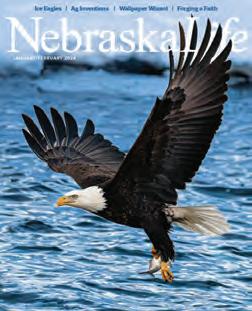
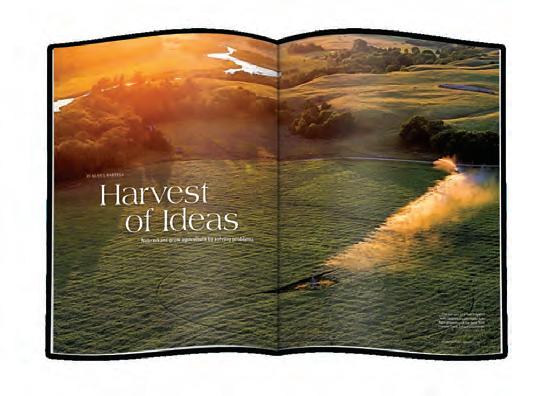
said because a blacksmith in Firth, five miles south of Holland, made a wrench like that. He did not get a patent on it, but William Peterson did and made a lot of money doing it.
Ron Liesveld Lincoln
Following my freshman year of college, I landed a summer job on a ranch south of Bassett. They were looking for equipment operators, not cowboys. I reported for duty in early July and was introduced to a brand new, bright red, 30-foot hydraulic dump rake that was mounted on rubber tires. It was hitched to a Super C tractor and ready to go. The ranch foreman proudly called it a “Rowse Rake.” It was the summer of 1954.
Thus, it was with considerable nostalgia
In the “Harvest of Ideas” story about Columbus farmer Frank Zybach who invented center pivot irrigation, we erroneously published a photo of another Nebraska irrigation pioneer, Ted Olson Sr. with his Olson 103PL center pivot with Corner Commander.
Based in Atkinson, Olson and his brothers manufactured irrigation systems beginning in 1965 for their own use and commercial production beginning in 1967 – shipping irrigation units across the United States, South America and Saudi Arabia.
that I read “Harvest of Ideas” recounting the origin of this marvelous machine in 1959. I’ll leave it up to someone else to figure out the 5-year time warp! All I know is that I spent two summers on this hay crew operating the Rowse Rake and enjoyed every day of it.
Paul Glover Spencer, Iowa
Editor’s Reply – Fun story, Paul! We checked with Rowse Rakes, and you are correct: They started manufacturing in the mid-1950s and formally incorporated the company in 1959.
We went to Omaha with friends to tour homes shown on the Street of Dreams in 2009, where we first saw Vahallan wallpaper (“From Ranches to Mansions,” January/February 2024).
A few months later, I was visiting with my artist friend Kevin in Lincoln. He was asking about our new home and wanted to know how we hoped to decorate it. I said I saw this “beautiful wallpaper” – he knew exactly what I was talking about because he worked for Vahallan Paper Co. at the time.
He offered to create paper specifically for our house and even offered to put it up. This style of paper is now found in many places all over the world, as well as in my home in Elsie, Nebraska.
Susan Hanson Elsie
The beautiful January/February 2024 issue arrived, and I read the heart-warming stories and items with high interest.
I am always interested in the Poetry section and found Betty Schmelzer’s poem “The Elopement” delightful. Her ease in writing is to be admired. We are sort of related. Her daughter is married to my nephew, and we belonged to Lincoln Chaparral Poets when that group was active.
Beth Franz Lincoln
When I was in 9th grade in Scottsbluff, in 1962-63, the cafeteria served a dish containing kraut or cabbage and finely ground hamburger and served it over mashed potatoes. I contacted some people who lived there at the same time, but no one remembers the dish. I have researched Scottsbluff menus, to no avail. It could have been just
a local dish they made. I’m trying to find the correct ingredients of that dish if you could help.
Bruce Felty Holdrege
Editor’s Reply – OK, Nebraska Life subscribers, you read Bruce’s request. If you have this recipe – or one like it – send it to us here at the magazine: editor@nebraskalife.com or to the mailing address at the front of this issue.
I was in the dentist’s office in Benkelman with my husband. While he had some work done, I picked up your magazine and read it cover to cover. What a great magazine and so I am ordering a 2-year subscription for me and my husband. We will look forward to each one of them.
Jim and Connie Maxfield Wauneta
PLEASE SEND US ...
YOUR LETTERS
Send your letter to the editor to editor@nebraskalife.com or to the mailing address at the front of this magazine. Each month, one letter writer will receive a free 1-year subscription. This issue’s winner is Paul Glover of Spencer, Iowa.
We want to read about your best Nebraska memories, adventures, travels, friendships and community service. How long should your story be? Start with 200 words and go up to 800 words. If available, please send photos. Send to editor@ nebraskalife.com.
Nebraskans love to take pictures. Send your digital photos of activities, nature, wildlife, travels, attractions and community events to photos@nebraskalife.com.

by TIM TRUDELL
Leaning forward, Bob Bruning browses the selections on the vintage jukebox. Pressing one button, then another, a brief pause before a favorite from his youth blasts from the speakers, “Para bailar La Bamba, Para bailar La Bamba...” The 1958 hit song “La Bamba” by teenage heartthrob Ritchie Valens plays as the 82-year-old reflects on his love of the 1950s and ‘60s that led to a collection that rivals most music museums.
Bruning could never have dreamt as a teenager in Gretna that one day he’d own a necklace worn by Elvis, a small case given to Marilyn Monroe by President John F. Kennedy or an original letter written by Patsy Cline.
The memorabilia harken to Bruning’s youth, when he and his three sisters attended school in Gretna. While Gretna added a second high school for the 202324 school year with about 750 students, Bruning recalls having 20 classmates in his senior class of 1960.
“The whole town was about 700 people back then,” he said. “The high school then is now an elementary school.”
Growing up on farms outside Omaha and Gretna, the Bruning siblings would spend time after school doing chores while classmates hung out at local malt shops. But, when it was their turn to enjoy a soda or hot dog and fries, Bruning took advantage of the scene, soaking up the ambience and the sounds of the 45s blasting from the jukebox that stayed with him.
Later, after working for other companies, Bruning and his wife Sharon started Bruning Seed Company, as well as an agriculture real estate company. They later added a commercial building management firm, with which they still dabble, despite selling the other businesses.
In the early 1980s, seemingly consumed
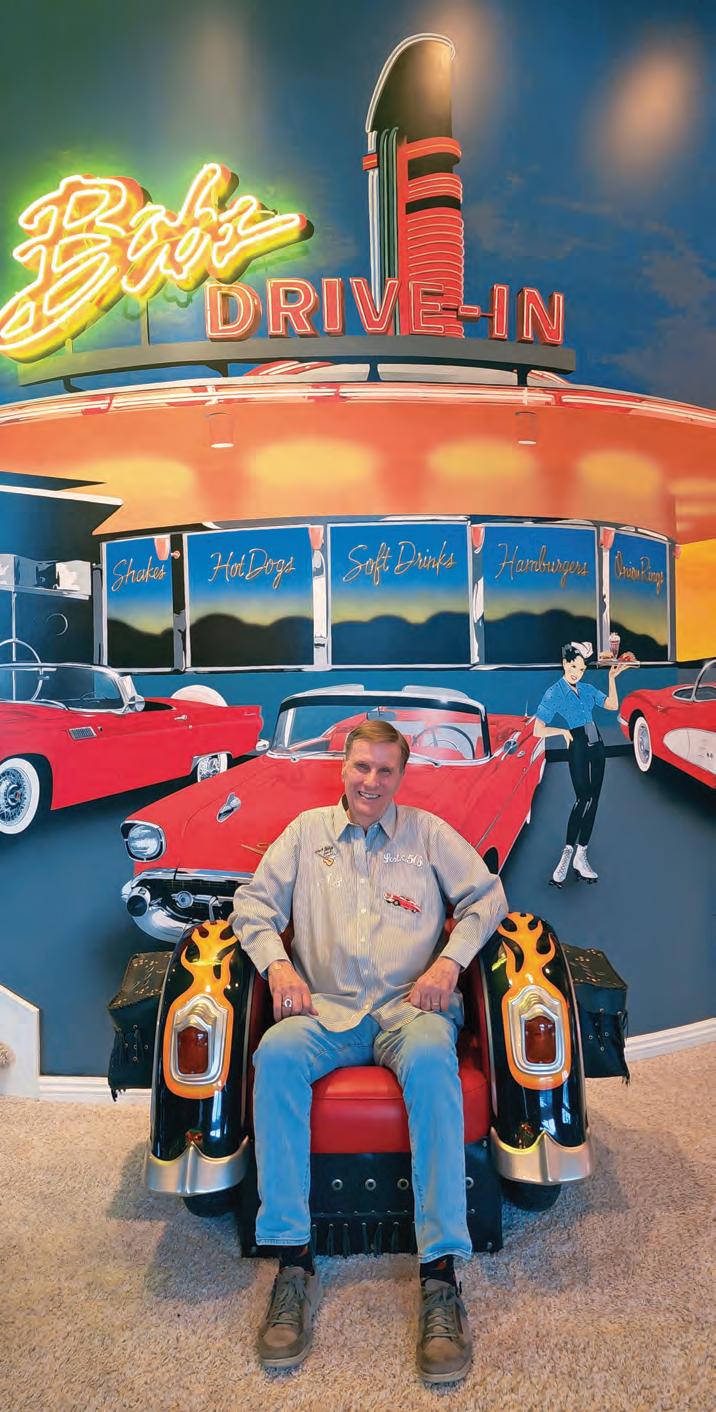
by his business, Sharon suggested Bob find a hobby as an outlet. “I thought he would take up golf,” she said.
Instead, the Brunings traveled around the country to places such as Dallas, Memphis, Orlando and California, picking up memorabilia that once belonged to celebrities such as Roy Rogers and Dale Evans, Patsy Cline and Buddy Holly.
It all started with the vintage jukebox purchased from a man in Gretna, of all places. It was a challenge that took Bruning’s best negotiating skills.
“He refused to sell it,” Bruning said. “He had a Tennessee walking horse he was trying to sell, so I offered to take the horse if he included the jukebox.”
While the jukebox harkens to the days of poodle skirts, Bruning’s favorite memories involve Elvis Presley, the King of Rock and Roll. His collection’s focal point is a gold jacket once worn by Presley in the movie “Viva Las Vegas.” The Brunings bought the jacket during a charity auction at Graceland, Presley’s mansion.
The family room – including a malt shop exhibit with a counter and working soda fountain – celebrates Bruning’s love of early Rock-and-Roll.
“It just seems like it was a better time in our lives,” he said. “It was a simpler time.”
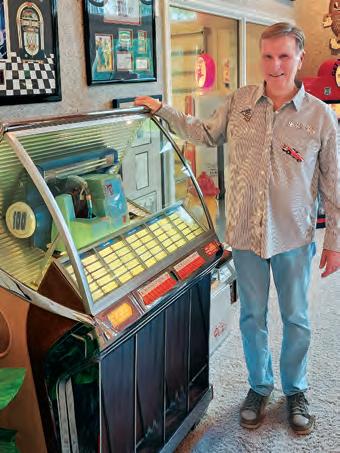
Bob Bruning’s fascination with the 1950s and 1960s drove him to collect drive-in memorabilia, and a jukebox.
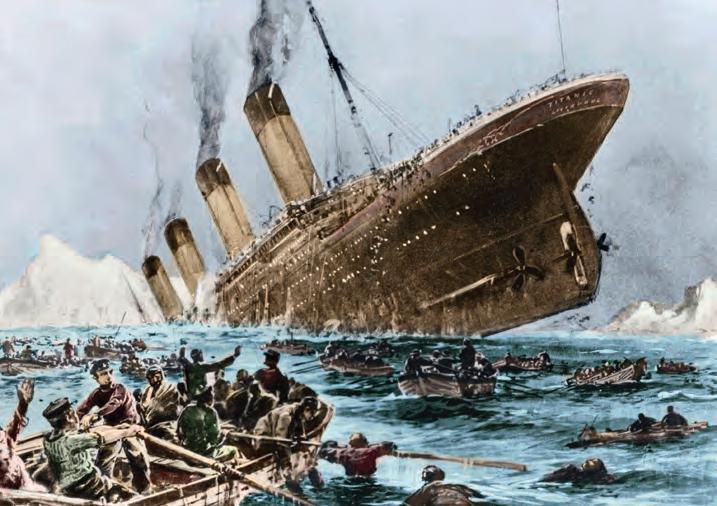
by CHEYENNE ROWE
Nebraska is unmistakably landlocked in every direction – not an ocean in sight. The dry land of Wahoo suited the late Swedish immigrant, Carl Johnson just fine. He had miraculously survived the sinking of the RMS Titanic
Johnson’s story began in Hultsjo, Sweden, 4,633 miles from Wahoo, where his brother, Eric Manstedt, had resettled. Johnson made the journey to escape his country’s compulsory military service. The 21-yearold raised the funds and purchased a ticket for passage to on the RMS Adriatic.
Johnson’s ship ticket – with the Adriatic crossed out and Ti tanic added, along with Johnson’s pocket watch – survived his time in the North Atlantic. Johnson’s boarding pass now resides in the Saunders County Museum in Wahoo. Johnson died in 1978, at age 87.
vice; Johnson was compelled to sail third class and splash into the Atlantic.
The 883-foot floating fortress struck a North Atlantic Ocean iceberg early in the morning hours of April 14, 1912. The “unsinkable” ship split in two.
Johnson was saved by the crew of the RMS Carpathia. Many survivors wrote to their loved ones. Johnson wrote a letter to his brother; the letter survives at the Saunders County Museum.
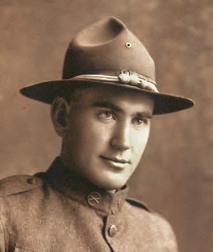
“While I now write to you, I can’t enough thank God that I am alive,” Johnson wrote. “I think when you receive this letter you think I am dead.
Most likely the newspapers have written that the biggest ship in the world, Titanic, has sunk with man and all.”
The letter was translated much later in life from Swedish to English.
The Titanic sank with a great explosion. He wrote to his brother that he then began a life-or-death fight with the Atlantic’s waves.
Johnson wasn’t supposed to be a passenger aboard the Titanic, said Erin Hauser, the museum’s curator. The ship operators wanted the Titanic’s maiden voyage to be a full one, so they transferred Johnson and others. Talk about compulsory ser-
After arriving safely, eventually, in Wahoo and finding his brother, Johnson and Manstedt worked together as carpenters until the arrival of WWI began. Having fled Swedish military service, Johnson gladly fought for the United States.
by TIM TRUDELL
Looking over three tiers of finger food on their table at Our Specialtea, friends April Gilman and Nancy Copple’s appetites were whetted by chicken salad on croissant, fruit, cheese and slices of cake. It’s time for High Tea with a Nebraska twist. Instead of tables and flatware named after the great queens of England, Jean Beckman serves tiers of finger food named for the queens of her family: her mother Ardith and her sisters Norma, Charlotte, Phyllis, Eileen, Bernice, and Lois.
As an ode to her Swedish heritage and to the traditions built on the family farm near Bancroft, Beckman serves her Seven Sisters brew, loose tea leaves along with flavors of dark chocolate, white chocolate, vanilla and dehydrated apple bits.
Beckman’s ancestors arrived in northeast Nebraska in the late 1800s, bringing with them staples of the old country: lefse, meatballs and sardines. Horse-pulled plows carved uneven lines in the fresh Nebraska dirt as Carl Johnson built a life with his young bride, Emma. Corn

grabbed hold of the soil as the crop’s roots dug deep and spread, creating an anchor to sustain the Thurston County family.
Carl and Emma raised 11 children –four boys and seven girls. The youngest, Ardith, married Leo Cleary. After farming for a year, the young couple moved to Fremont, working in the city’s factories and other nearby communities. Beckman was one of five children born to the Clearys.
While the 11 Johnson siblings found their way off the farm, it remained an anchor for Sunday dinners, holidays and other family events. Each Fourth of July, the family gathered at the Johnson farm to celebrate the nation’s, and a brother’s, birthday. Running around the farm, playing childhood games like freeze tag, hide-and-seek with siblings and cousins, B eckman and the other children worked up an appetite.
The Johnson daughters brought their best dishes, with unique designs painted on the fragile pieces. Each Johnson girl sought to out-do her sisters, even if subconsciously. Cast iron skillets, lard, butter, cooking oil – whatever it took to create the best chicken at the get-together.
“They always made the chicken the same way, but each one tasted different,” Beckman said, recalling the aroma and flavors of chicken legs, thighs, breasts and wings encrusted in deliciousness and served on the fine china.
Those family stories continue to find their way to the six tables inside the small Fremont tearoom. Building-long glass windows open the tearoom to downtown Fremont, as Beckman’s mother’s and aunts’ photos greet diners at each table. The sisters’ photos are rotated, sitting on a shelf of a floor-to-ceiling unit, overseeing that day’s tea service.
Prior to opening Our Specialtea’s original location in downtown Blair 12 years ago, a cousin asked Beckman if she would like her Aunt Bernice’s china. Then another offered their mother’s. Then another. And another. Soon, seven tables were set for service.
Each High Tea experience continues to relive family Christmases, Thanksgivings, Easters and birthdays on the family farm. Beckman smiles as she reviews the day’s tea offerings, knowing that the seven sisters will join each guest at the table.

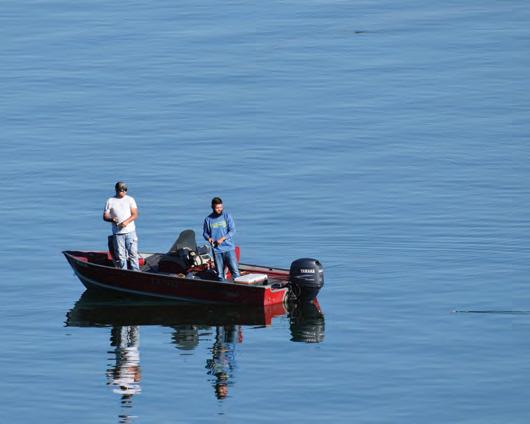


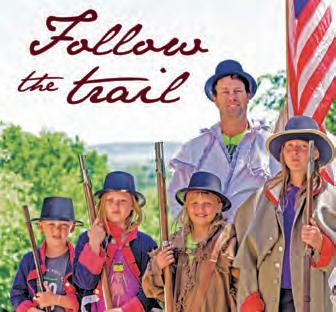

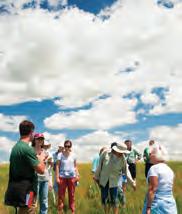
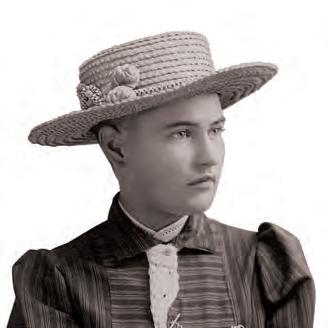
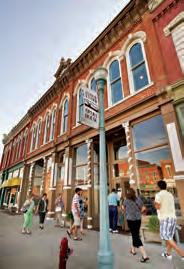



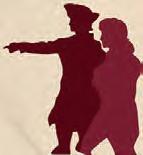





Lapis Lazuli Silver & Bronze Pendant
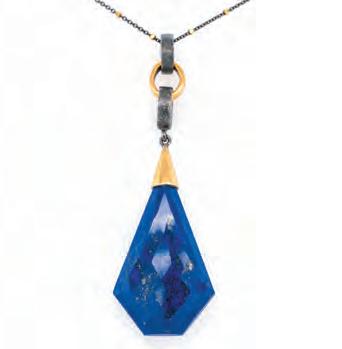

questions by BEN KITCHEN

1
Nebraska is one of the 19 states that share which bug as state insect in some capacity? This is despite the fact that it’s not native to the United States, and was introduced to the country in the 1600s.
2
Fruit Smack was a predecessor to what powdered drink mix invented in Hastings? It was named the official state soft drink of Nebraska in 1998.

3
Nebraska’s state quarter features a group of pioneers in front of what rock formation? This is almost certainly a reference to the fact that it was used as a landmark along the Oregon Trail.
4
Nebraska’s state gemstone is blue chalcedony. The prairie type of what other gemstone, a specific type of chalcedony, is the state rock?
5 What adjective appears in the name of the species of box turtle that became the state reptile in 2022? This descriptor is a bit unnecessary, as the species isn’t much different than others of its kind.
No peeking! Answers on page 64.
6
Nebraska’s state nickname is now the Cornhusker State. What was its nickname from 1895 to 1945, a reference to how Arbor Day was established in Nebraska City in 1872?
A. Arbor State
B. Forestry State
C. Tree Planters’ State
7
While Nebraska has had the same state flag since 1963, there have been proposals to change it. Why did State Sen. Burke Harr suggest it should be changed in 2017?
A. Colorblind people could struggle to see the details
B. It flew upside-down over the capitol and nobody noticed
C. The colors are too similar to those used by the University of Michigan
8
The Nebraska Secretary of State’s website says that the state flower is goldenrod, but they could be more specific, as goldenrod just refers to the genus Solidago. Per the provided scientific name, Solidago serotina, the state flower is what type of goldenrod?
A. Giant goldenrod
B. Shadowy goldenrod
C. Stout goldenrod
9
Nebraska’s state song is “Beautiful Nebraska.” Jim Fras, who wrote the music and coauthored the lyrics, was inspired by the scenery around which city?
A. Kearney
B. Lincoln
C. Omaha
10
Which of the following methods of transportation does not appear behind the smith on the Great Seal of the State of Nebraska?
A. Horse-drawn carriage
B. Steamboat
C. Train

11
Nebraska is the only state with an official state soil. Holdrege, named for the city of Holdrege, became the official state soil in 1979.
12
Nebraska actually has two official baseball capitals. Gov. Ben Nelson named Wakefield the official baseball capital and St. Paul the official historic baseball capital.
13
Nebraska’s state fossil is the mammoth as a tribute to Archie, a skeleton found on a Lincoln County farm. Archie is now the tallest mammoth mounted on display in the U.S.
14
The state migratory bird is the sandhill crane, which makes a lot of sense: they’re named for the Sandhills in north-central Nebraska.
15
Nebraska is one of the six states whose official state bird is the western meadowlark, making the bird the most common state bird in the country.

by STEVE MOSELEY
Are you a fisherman – or perhaps more properly in this enlightened age, a fisherperson? If so, who taught you in the beginning? More to today’s eventual point, what has fishing taught you since?
As for my brother Jim and me, we learned from our father, Russell, a very long time ago. I cannot document it for sure, but I have every reason to believe this photo is our very first stringer of fish.
There we stand, resplendent in the 1950s sporting matching outfits (that’s me in the sassy hat on the left) our pant legs rolled up in the fashion of the day. Two brothers holding a few underwhelming sunfish caught with cane poles and garden worms on the banks of a lazy crick.
I remember scrambling into and back out of the weedy ditch, slithering (with great care) under the barbed wire fence, then strolling from the T intersection on the gravel road straight west of Weissert. Never heard of Weissert? That’s because time has fermented this then-magic place into a ghost of the classic rural community intersection it was back in the day: Pirnie Store, church and school on three of four quadrants north and east of Broken Bow. The fourth quadrant was a prairie dog town and, no, I am not kidding.
The Weissert Church of God hosts Sunday services for faithful congregants to this day. I find that quietly comforting somehow.
In our youthful years, we made endless indelible memories thanks to a tiny, primitive cabin and a leaky, wooden boat with an outboard Johnson Sea Horse motor at Lake Maloney south of North Platte. We caught walleyes (occasionally a great ‘ol big’un) plus perch and bullheads by the boatload, literally.
Our intermittently reliable vessel leaked so badly, the floor became a live well around our feet; this

despite Dad’s heroic efforts with three-pound Butternut coffee can in hand. So that is how it all began.
Fishing taught us many “how to live your life” lessons over the years. No one could possibly wet a line for decades without learning the importance of sharing, courtesy for others, cherishing resources and respecting the environment. Safety lessons?
Oh my, yes. Too often for me personally, safety was imparted by painful, or at least painfully embarrassing, trial and error.
You become disciplined to rise before the sun. You figure out how to curl up on the hard, cluttered, fish slime-basted floor of a smelly boat for a siesta when the bite inevitably stalls at midday.
Equipment must be properly tended, else failure is certain. Ditto for monitoring weather forecasts and, even more critically, gaining the intuition to read the sky and recognize danger looming over the horizon in time to skedaddle for shore.
Is all this just simple common sense? Of course it is. But can you name a more enjoyable way to get coached-up on life than wetting a line?
Send your short stories about life in Nebraska to: editor@nebraskalife.com
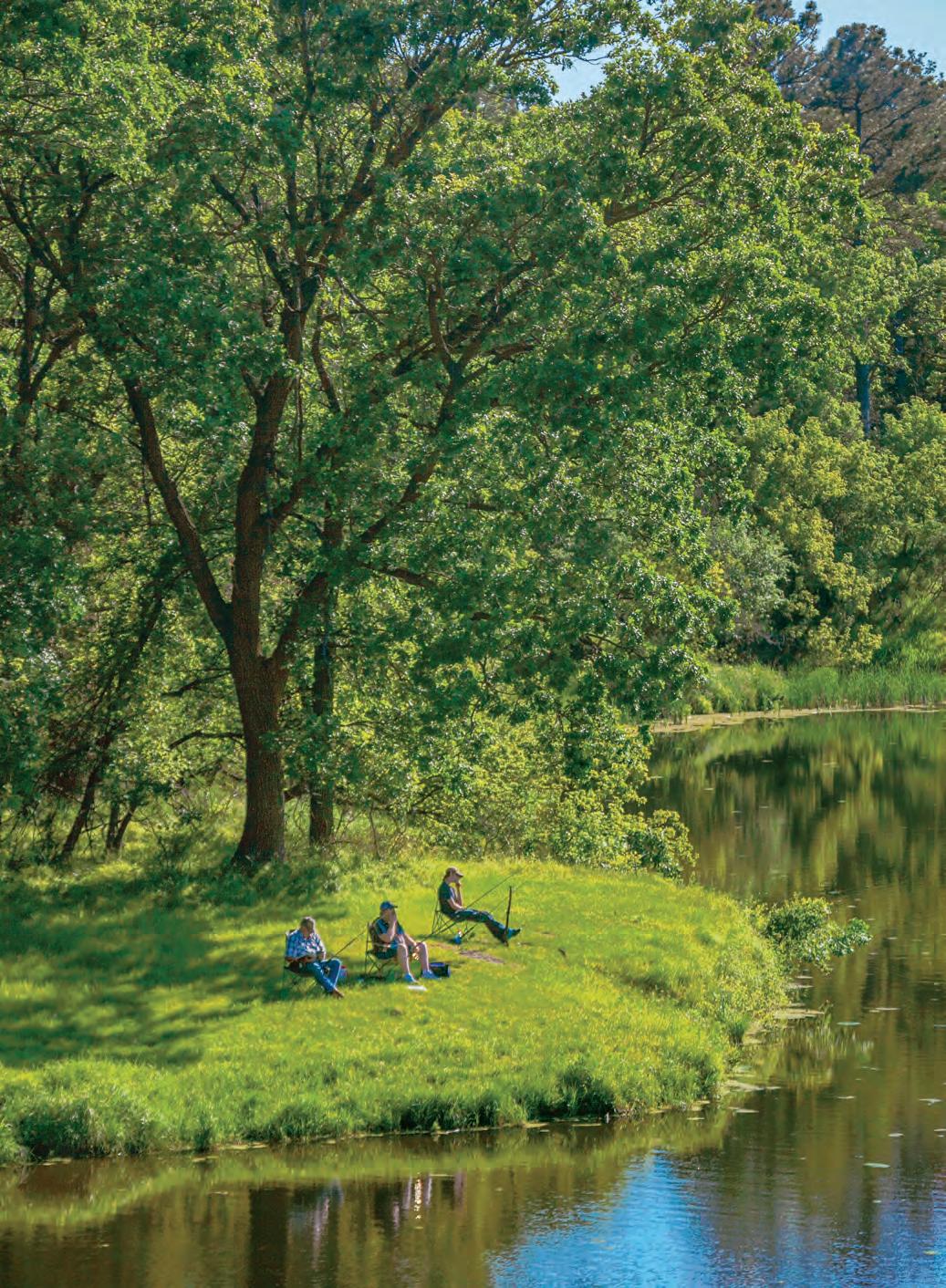
story and photographs by NICOLE LOUDEN
For a moment, my mind could not comprehend what I was seeing. The calf that my husband had pulled was laying wet and separated from his mother, but something else was emerging from her hind end. Something bumpy and red, altogether alien and angry. It grew as she continued to heave and shove. My husband yelled for help as he ran and pushed back on the massive lump sprawling behind the cow.
Oh. Oh. OH!
My ears rang, my head swam, and my stomach lurched as I realized what the angry red thing was. I fell off the four-wheeler in a pile and crawled toward the house, trying not to faint or vomit. The prolapsing cow was the last straw for me, I wanted away from that scene and place altogether.
Those early days were the most difficult for me on the ranch, so unfamiliar with cattle and the Sandhills. Up until marriage, I had lived my whole life in Cozad, the town of about 4,000 people in Central Nebraska. Though rural, my life there was far removed from agriculture. Experiences with country living were limited to summers spent with my maternal grandparents four miles north of town. They kept chickens and had dogs and cats, but never livestock.
I met my husband at the University of Nebraska at Kearney, and I suppose most people would say we were an unlikely pair. Jon – a rough-and-tumble ranch kid, walking around campus in his black leather bomber jacket smoking cigarettes,
and me – a naive elementary education major on her way to a campus bible study. Chemistry proves opposites attract, and when it is meant to be, it hardly matters if the pairing is unlikely or not.
We were married Feb. 22, 2003, and I moved to my husband’s ranch near Ellsworth. Although still in the same state, the Sandhills of western Nebraska seemed a foreign place to me. The flat, fertile farm ground and wide Platte River wreathed in trees was lost to endless hills of sand and grass. It was stark, desolate, windswept, and frightening.
During this desolation, I began my first calving season on the ranch. I had never experienced an animal giving birth and suddenly I was seeing hundreds. Calves were born, wet and slimy, and mothers rose to lick them. Calves weren’t born, were not brought up and pushed out, and my husband hooked chains around their feet and pulled them out with a pulley system in the barn. Calves were born and couldn’t stand to suck, laid there and shivered and died. Calves were born and acted as if they had no will to live, refused the milk, refused their own mothers. The cruelness and reality of nature slapped me in the face.
I was given the task of rubbing a calf with towels and gunny sacks after we wrenched it out of his mother. I rubbed gently at the warm, wet calf. “Faster,” my husband instructed, rubbing the poor thing harder and faster. I held the chains, readied the rope on the block and tackle, helped open gates, and pushed cows into





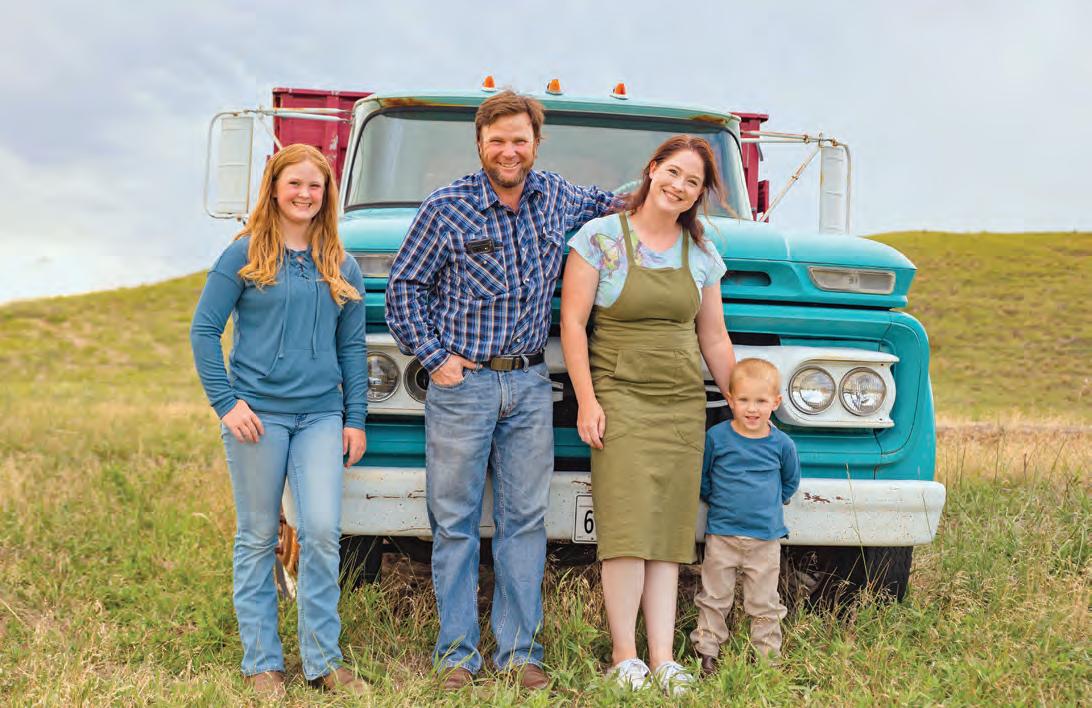


the stanchion. My head spun with the furiousness of it, the intimacy of it; during calving we lived and breathed cows and calves. I was never a coffee drinker until that first calving season.
I was so frightened by the new house, new place, and new routines, I woke with Jon for every night check and rode clinging to him through the meadows. When he left me alone, I listened to the creakings and groanings of the little house built in 1949. Outside, we had one tiny cottonwood he transplanted from a roadside ditch. Rhubarb grew on the south side –likely brought with the people who homesteaded here – and a handful of irises thrust sharp spears up from the east side of the house. I missed trees. I missed flower beds and shrubs, missed gardens filled with tomatoes and beans.
A sad little alkali pond stunk when the wind blew from the south. The wind always seemed to blow here. Could I ever love this house and place?
Twenty-one years later, I’m helping my husband sew up a prolapse. I’ve got warm water in a bottle with a hose to wash off the uterus, threaded the umbilical tape through the large, curved silver needle, and loaded the syringes with the correct amounts of Lidocaine and Excenel. My heart is pounding but my hands are steady. I’ve done this before and know I can do it again.
I hold the tail of the cow in the chute while Jon sews, assisting him as best I can. He looks at me, his blue eyes intent on my face. “How are you doing?”
“It’s the smell more than anything,” I say, trying not to think about how to describe the lumpy mass or his needle in and out of the skin or the intense smell of blood and afterbirth. Details that still make my head swim even after 20 years.
“I’ve nearly got this done,” he says, “If you can, go wash the chains and then come get the vet box to take to the house.” He’s giving me the out and I take it.
Away from the sights and smells of the prolapse, I breathe deeply of the crisp night air. The stars above are thick and near. It’s so quiet, so peaceful. How did I ever find this frightening, I wonder? The hills are my home, the cattle are my life; I belong here on these prairied dunes with my husband and children.
Life on a cattle ranch in the Sandhills isn’t easy. There have been many times in the last 21 years I’ve wanted to be away from this place, maybe even be done altogether.
But I’ve persevered. Through droughts and blizzards, through good times and bad. I’ve learned to love these sand dunes robed in grass. I’ve learned to mark the seasons with the returns and leavings of the birds, the changing of the prairie, the activity of the sky and earth. I’ve made my peace and made it my home.
Now I write stories from the ranch, from the Sandhills, from the heart. A prairie girl with sand in my shoes.
The hills are my home, the cattle are my life; I belong on these prairied dunes with my husband and children.

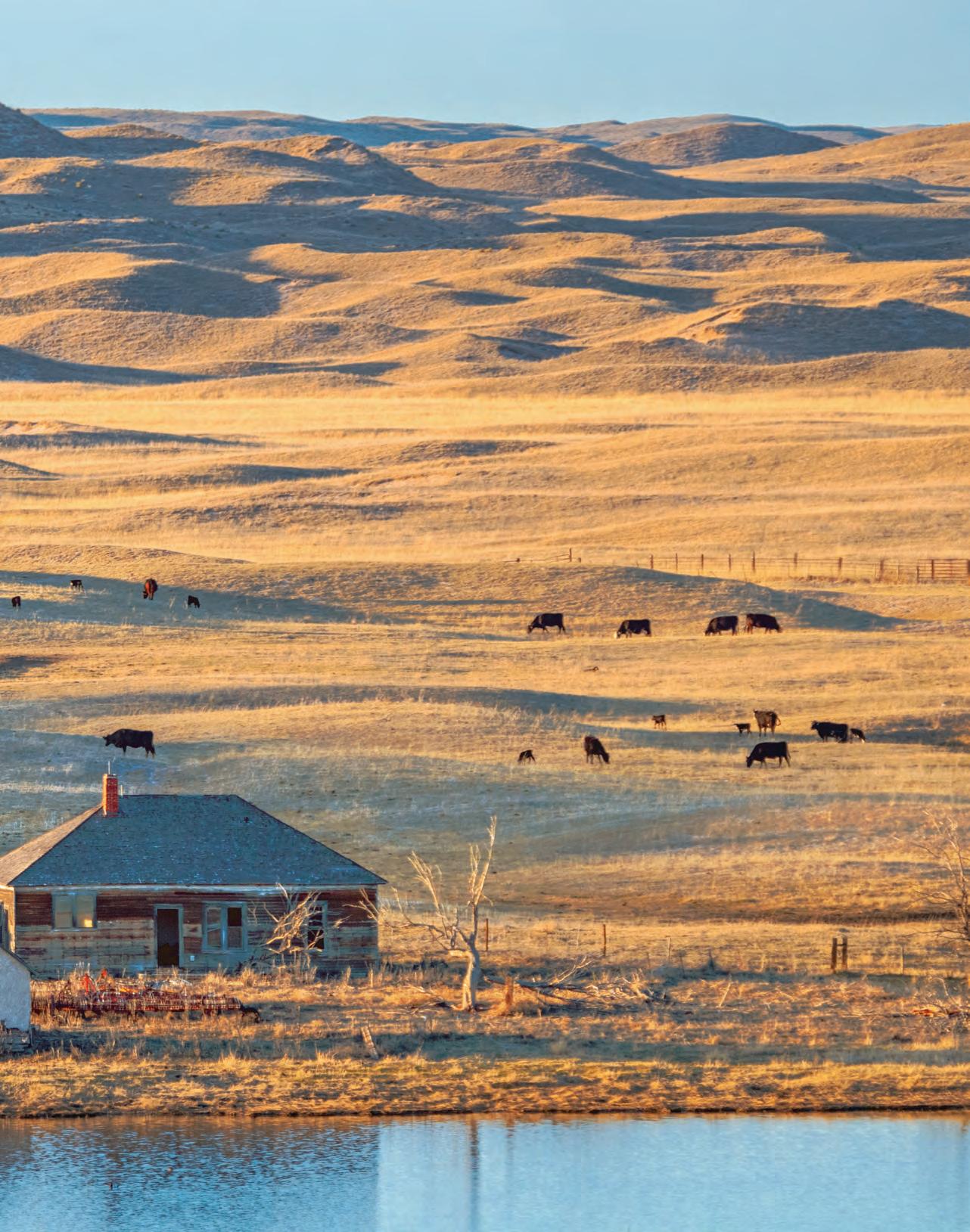
by RON J. JACKSON, JR.
James Charles Dahlman and 11 of his fellow N-Bar Ranch cowboys sat astride their horses in April 1879, staring into the abyss of Nebraska’s Sandhills. In another place, they might have considered their task at hand routine – search for thousands of cattle that drifted from their ranch into the dunes. Yet the Sandhills were far from just another place.
Strange stories of the Sandhills once filtered into cow camps and ranches along its edges – frightful tales of those who ventured into its shifting sand and maze of trails, and never returned. As early as 1860, white pioneers dubbed the Sandhills the “Great American Desert” – an uninhabitable place for neither man nor beast.
Pioneer rancher E.S. “Zeke” Newman, aware of the peril, placed line-riders along his southern boundary when entering the Sandhills. He hoped to prevent his cattle from drifting into the Sandhills and forever vanishing.
Newman first established his ranch in 1877 after the surrender that May of the great Lakota warrior Crazy Horse, whose name alone spread fear throughout the region. Newman built his N-Bar Ranch at
“Texas

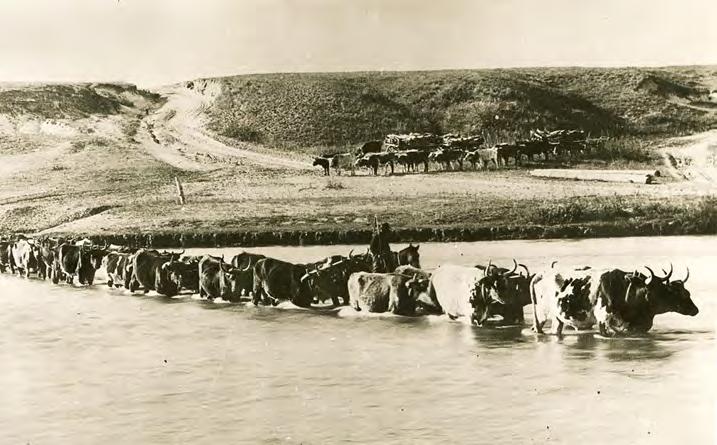
the mouth of Antelope Creek on the Niobrara River, 20 miles east of where the town of Gordon is now located. His range stretched 40 miles east and west, and 65 miles north and south, and his outfit primarily supplied the government fresh beef for the Pine Ridge and Rosebud reservations in the Dakota Territory.
Newman’s line-riders played a critical role in fulfillment of those federal contracts. They served as the last line of defense between the herd and the forbidden Sandhills. Only their task became impossible in March 1879 when a blizzard hammered Nebraska. Newman and his cowboys estimated at least 6,000 head of cattle had drifted into the feared wasteland during the mighty storm – nearly half of the ranch’s herd.
Foreman Billy Irwin tried to convince Newman that a small party of cowhands should attempt to retrieve the missing cattle. The prevailing thought among seasoned ranchers was that the Sandhills were unsustainable for cattle, but even more perilous for humans. Hardened soldiers and rugged cowboys who ventured into the Sandhills always returned with the same general description: A desolate patch of earth void of water. Newman carefully weighed the risks before he reluctantly agreed with Irwin’s plan. The N-Bar boss then approved the selection of a dozen of his bravest cowboys for the mission.
Dahlman – then known as “Texas Jim” – was one of the 12. He rode side by side with his compatriots as they embarked
for the daring round-up on April 15. Now each cowhand gazed wearily into those dreaded Sandhills, although Dahlman may as well have also been staring at his destiny. The 22-year-old Texan seemed uniquely qualified for the moment. Comrades thought of him as a sensational rider, a crack shot, and most notably, a fearless man.
None of those traits were coincidental. Born December 15, 1856, in Yorktown, Texas, Dahlman grew to adulthood on a ranch. He began riding as soon as he could walk, often tied to the back of his own pony. By age 17, Dahlman displayed his expert riding skills when he won a statewide race. Yet Texas had already taught him something entirely different about the skills needed to survive on the frontier – abilities far more important than taming an unruly steed.
Violence, the rule of law, and vigilante justice mingled freely in the Texas of his youth. The wiry, brown-eyed cowboy thus became keenly adept at how to wield a pistol. “As I became a young man, about the only right I knew was that of the pistol and a quick hand,” Dahlman once said. “The law was but poorly enforced, and men lived by the right of might. I got to be pretty tough. I admit it. I could see that it was only a question of time when I would get into trouble …”
Predictably, the worst kind of trouble found Dahlman shortly after his 22nd birthday in 1878. Trouble arrived in the form of his former brother-in-law, Charley Bree. Bad blood developed between
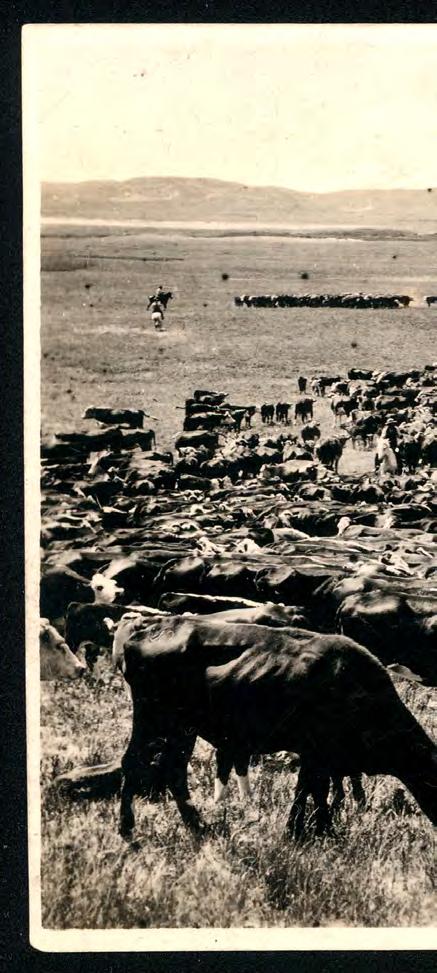
the two a few years earlier when Bree married one of Dahlman’s elder sisters. Dahlman thought of Bree as “a shiftless sort of fellow, nothing more or less than an outlaw.”
Dahlman’s low opinion of Bree only worsened when the drifter abandoned his sister shortly after the birth of their child. The quick-tempered cowboy answered Bree’s despicable act with a threat: He would kill Bree on sight the next time he saw him. “Then one day, purely by accident, we met in a town where neither was known,” Dahlman recalled. “No sooner did we face each other than we both pulled and shot.”
Bree’s blast missed its mark. Dahlman’s shot struck Bree above one eye, “dropping

him like lead.” Dahlman fled the scene and never looked back. He later admitted he wasn’t going to wait for a town marshal to decide his fate. He rode hard for Arkansas, where he hid under the alias “Jim Murray” and waited for his pal, “Stonewall” Bennett Irwin.
Bennett’s brother, Billy, worked as a foreman at Newman’s newly established ranch on the Niobrara River in Nebraska – a place where Dahlman could find work and hide from the ghost of his recent troubles. Irwin and Dahlman traveled by train to Omaha, where they disembarked on a frigid day in March 1879. Now, within a month of his arrival, Dahlman and his fellow N-Bar cowboys rode without hesitation into the unknown of the Sandhills.
They were determined to return with Newman’s cattle, and more importantly, avoid death.
Two days into the expedition, another blizzard blasted the cowboys. Dahlman, who lived the remainder of his life in Nebraska, called it one of the worst blizzards he had ever witnessed. The storm raged for three days. Dahlman and the others huddled together, desperately trying to stay warm by burning the scant wood they hauled for cooking and any buffalo or cow chips they could scavenge. No one dared to stray too far from camp.
Finally, the storm dissipated. Scouting parties quickly departed to find any signs of Newman’s cattle. What they discovered left them astounded. “We soon began to
strike cattle perfectly contended in their new home amidst the splendid grass and water in the valley,” Dahlman recalled. The first batch of native cattle they found were “as wild as a bunch of deer” and “as fat as any ever brought out of a feed lot.” Dahlman added, “We could hardly believe our own eyes.”
Newman’s cowboys roamed the Sandhills for the next five weeks, rounding up 7,000 N-Bar cattle, as well as 1,000 mavericks. Of the 1,000 mavericks – or “natives” – 300 head were determined to be between 1 and 4 years old, shattering any notion cattle couldn’t survive in the Sandhills.
News of the N-Bar round-up in the Sandhills spread like a stampeding herd
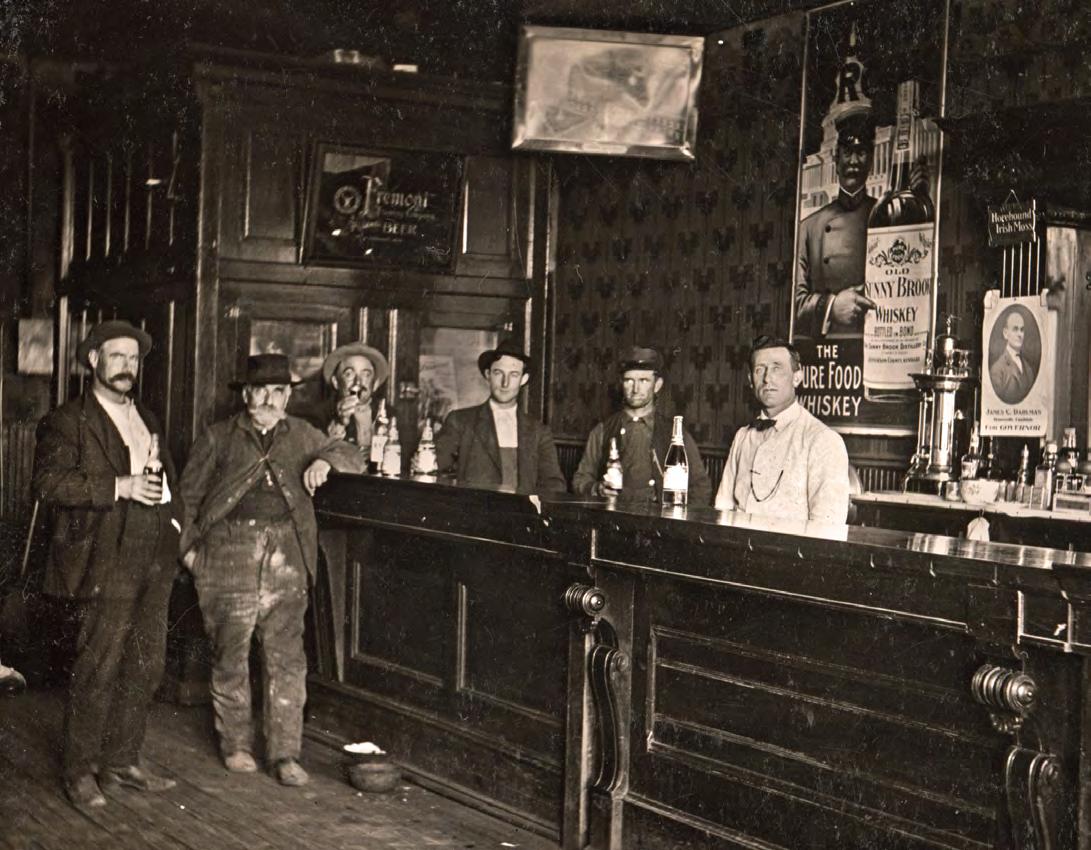
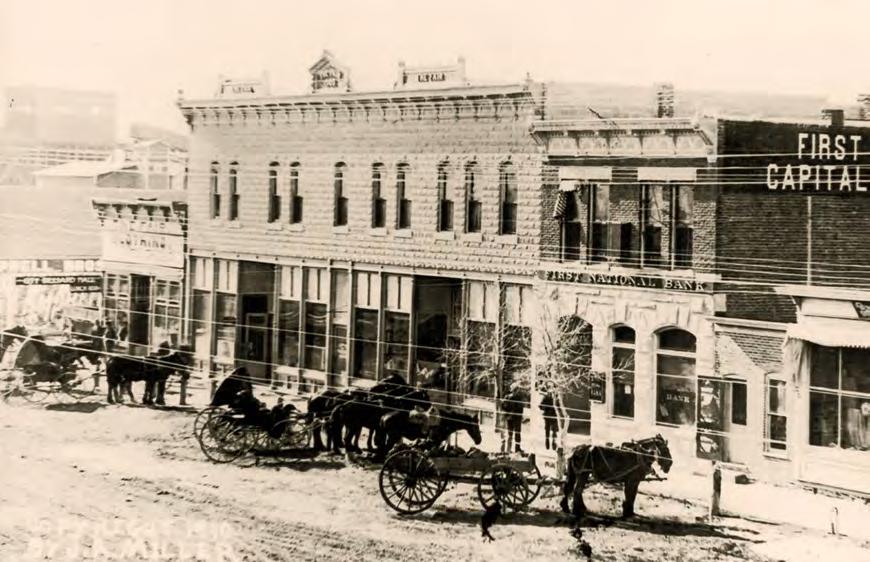
The “Perpetual Mayor of Omaha,” Dahlman ran for governor of Nebraska in 1910. His poster appears behind the bar (above). A friend of alcohol, he fiercely opposed Prohibiton. He lost. Businesses in Gordon (left) served the needs of line-riders such as Dahlman at N-Bar Ranch, 20 miles west at the mouth of Antelope Creek on the Niobara. Always the cowboy, Dahlman (right) rides at the 1924 Omaha Rodeo.
DAHLMAN EARNED A REPUTATION AS THE “WETTEST MAYOR IN AMERICA” AFTER THE NUMBER OF OMAHA SALOONS DOUBLED DURING HIS FIRST DECADE IN OFFICE.
throughout the West. Cowmen journeyed from near and far to hear the extraordinary story, elevating Dahlman and his fellow cowboys to living legends on cattle trails everywhere and forever changing the way ranchers viewed the Sandhills. Soon, instead of shielding cattle from the Sandhills, ranchers ordered them driven into the once-forbidden land.
Dahlman’s reputation soared in the aftermath of the historic discovery, as did his value to Newman. By Spring of 1882, Newman annointed him one of his foremen on his next cattle drive – 20,000 head of cattle and 500 horses from Baker City, Ore., to Newman’s newest ranch in Montana Territory and the Pine Ridge Reservation. Mining operations stimulated the livestock industry during the 1860s in the Pa-
cific Northwest. Overproduction, however, ushered in a market depression that lasted from 1872 to the close of the decade. Fortunes changed dramatically at the dawn of the 1880s when new markets emerged from cattle ranchers in Montana Territory, Wyoming Territory, and Nebraska who sought to stock their ranges. By June 1882, Portland’s Morning Oregonian estimated that 100,000 head of cattle alone had already passed through Boise City, Idaho, located on the southernmost of two major trails eastward. The tally surely included Newman’s crew, which arrived in Baker City in April after an arduous journey. The outfit included Newman, his secretary, S.W. Russell, Dahlman, and 40 cowhands. They first traveled 160 miles by stagecoach to Sidney, where they then boarded a Union Pacific
Railroad train to Kelton, Utah Territory. In Kelton, the cowhands again traveled by stage, departing in groups of seven once a day.
Newman, Russell, and Dahlman left Kelton shortly afterward in a lumber wagon loaded with more than a ton of mail. An encounter with muddy roads soon impeded their travel. Dahlman later recalled how every few miles the threesome “had to get out and push.” The whole time Dahlman never took his eyes off a shoebox wrapped in heavy twine. Newman placed the shoebox in Dahlman’s protective care. Inside the box, and unbeknownst to anyone outside the threesome, sat the means to purchase the livestock and supplies in Oregon – somewhere between “$200,000 and $300,000” in cash.

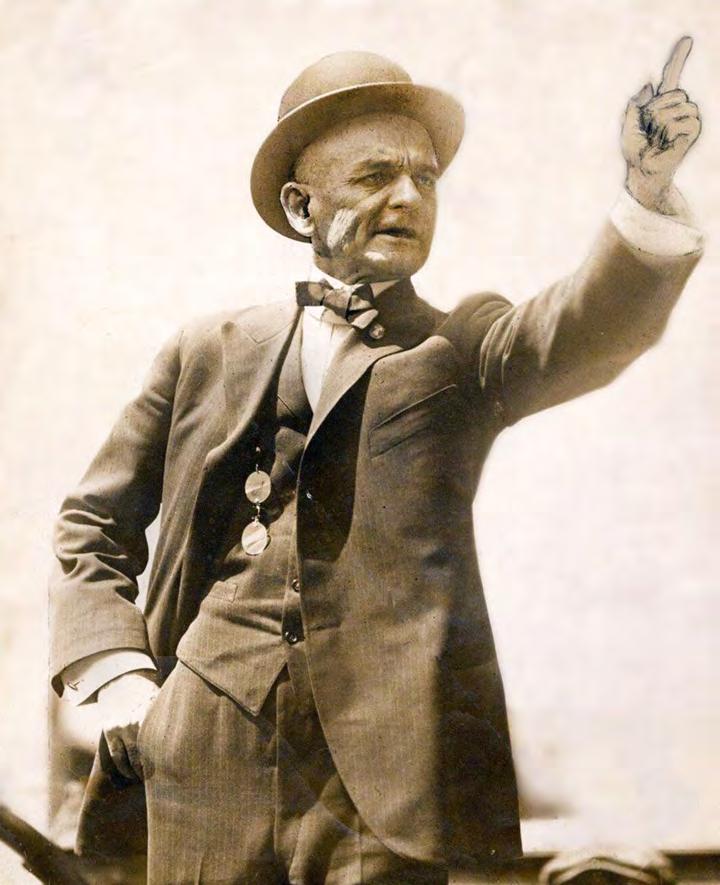
Despite the hardships, Newman’s outfit and irreplaceable shoebox reached Baker City on April 15. The cowboys divided the purchased cattle into smaller herds of 3,000 before hitting the trail, although accounts vary as to whether they started with 20,000 or 15,000 head of cattle. Dahlman remembered taking immediate charge of eight drovers, a cook, and a wrangler, as well as 2,800 head of cattle and “quite a little bunch of horses.”
Initially, Dahlman’s crew headed for Nebraska until a courier warned of prairie fires ahead. The Texas-born leader decided to change course and drive the herd to Montana. By then, his men had already traversed
narrow, mountainous terrain, and even spent three days and three nights weaving the herd through dense pockets of pine trees. They eventually crossed into Montana, and drove the cattle up the Big Powder River to Newman’s ranch on Cache Creek. The outfit ended its epic drive Oct. 15 – six months to the day after arriving in Baker City.
“When all the herds were counted, Mr. Russell found mine ranked first,” Dahlman proudly recalled 40 years later. Newman presented Dahlman afterward with a new pearl-handled gun, knife, and holster – gifts worthy of his leadership, grit, and heroics.
A gift worthy of a legend. And a legend worthy of greater deeds.
Shortly afterward, Dahlman abruptly left the range in search of other employment. He served as a brand inspector for the Wyoming Stock Association in Valentine, and then later as the Dawes County sheriff before being elected in 1885 to the first of two terms as mayor of Chadron. Politics suited Dahlman. He became a friend and key fundraiser for Congressman William Jennings Bryan in his three unsuccessful bids for the White House, as well as a state delegate in 1892 and 1896 at the Democratic National Convention. In 1899, Dahlman went to work for the Union Stock Yards Company of Omaha.
Then, in 1906, Omaha’s voters elected Dahlman as mayor. He would eventually serve a total of 20 years as the city’s mayor under the moniker “Cowboy Jim,” riding his reputation as a noted Nebraska cowboy to an astonishing eight elected terms. He earned a reputation as the “wettest mayor in America” after the number of Omaha saloons doubled during his first decade in office. Dahlman never shied away from anything while in public office, including his open connection to Omaha crime boss Tom Dennison – a man who found the old drover tolerant of his ward’s preferred vices of gambling, alcohol, and prostitution.
Only death extinguished Dahlman’s political grip on Omaha. He died Jan. 21, 1930, at age 73 after a stroke at a Missouri resort. His death cast a long shadow over Omaha, but not over his reputation as a political firebrand. By then, his political career overshadowed even his extraordinary deeds as a cowboy.
One newspaper reporter even noted with a touch of hope how someday, “the romance of his early life may be hammered into copy and then placed in cold type” – the final step of printing history, the once-hot lead from a Linotype applying ink to a page. “He did not know the meaning of the word fear.”
Dahlman’s story did indeed begin long before his election as mayor of Omaha in 1906, back when the buffalo still roamed the Great Plains in vast herds and heroes emerged from distant cattle ranches.
Today, that “cold type” might be best told by the shifting sand dunes of Nebraska’s legendary Sandhills.

Crowds gathered on the eve of President Theodore Roosevelt’s second inauguration on March 4, 1905, in Washington, D.C., to the see authentic Western cowboys dressed in their colorful regalia. The cowboys didn’t disappoint.
One old cowpuncher shocked spectators when he bolted down Pennsylvania Avenue aboard his horse, twirled his rope over his head, and lassoed an unsuspecting lad on a curb. The boy shrieked, and the crowd cheered.
The cowboy’s name was James Charles Dahlman – an old acquaintance of the president from his ranch days in the Dakota Territory.
“When Theodore Roosevelt was a cowpuncher on the Little Missouri River and rode the range in Montana and South Dakota, he and ‘Ol’ Jim’ first became acquainted,” wrote Fred Carey in
a posthumous biography on Dahlman, Mayor Jim: An Epic of the West. Seth Bullock, a South Dakotan and close friend of Roosevelt, traveled to Omaha to ask Dahlman if he could help recruit cowboys for the inaugural parade. Some 60 former cowboys eventually made the trip east and participated the historic parade much to the joy of Roosevelt, who romanticized the American West as a child.
Chiricahua Apache warrior Geronimo and Comanche Chief Quanah Parker were among six American Indian chiefs who were also invited to attend. Together, the cowboys and Indians paid homage to Roosevelt’s vision of the Wild West.
“We had the time of our lives,” Dahlman said. “We were well entertained. We visited the White House, paid our respects to Teddy and naturally were the talk of Washington.”
In Washington, D.C., the inaugural parade for President Theodore Roosevelt was a spectacle enjoyed by thousands on March 4, 1905. As Omaha mayor, James Dahlman helped recruit cowboys to take part in the festivities.
OMAHA STRONGMEN, CHAPTER 2
by RON SOODALTER
On a warm, late-September evening in 1919, the streets of Omaha erupted in mob violence that left two white men dead, one black man brutally lynched and the Douglas County Courthouse in flames.
In the aftermath, citizens attempted to assign blame to the spurious charge that the black man had assaulted a white woman. But the responsibility for the deliberate, politically motivated murder lay on one man, a powerful boss whom the law would rarely touch – because he owned the law.
When we think of the heyday of organized crime and the “roaring” days of Prohibition in America, the city that often comes to mind is Chicago. Yet, before there was an Al Capone or a Bugs Moran, a ruthless, charismatic Nebraskan held the city of Omaha in thrall.
He exercised control with equal measures of political corruption, violence and charm. His name was Tom Dennison. Nebraskans called him the “Old Gray Wolf,” and he ran Omaha practically unopposed for decades. Born in Iowa in 1858, Dennison made his first move to Nebraska as a toddler when his Irish immigrant parents transplanted the family
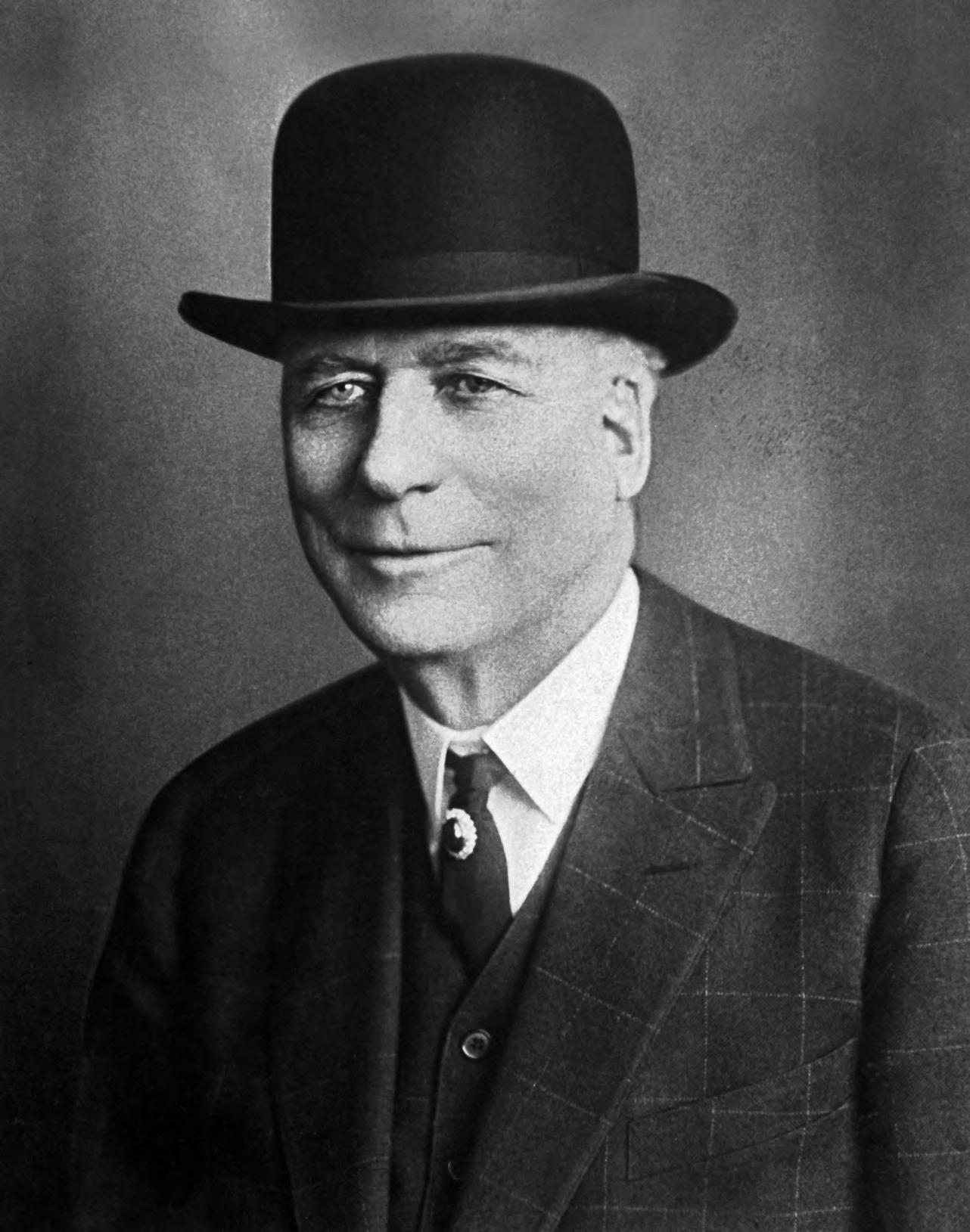

to a farm near present-day Jackson. At 15, Dennison left home, spending the next six years as a farm laborer, and then roaming the West, making his way as a blacksmith, gambler, gold seeker, bandit and saloon owner in Kansas, New Mexico and the rough-hewn mining towns of Montana and Colorado.
Although the Wild West was fast becoming a wistful memory, Omaha was far from tame, so Dennison began to make his mark. Still considered a wideopen town, it was often referred to as the wickedest city in America. In 1892, Dennison found himself back in Nebraska, this time in Omaha and with $75,000 in his poke.
Omaha was among the nation’s leading agricultural and meat-processing centers, with 10 railroads passing through it. The city’s population had more than doubled in 10 years.
But along with prosperity came lawlessness and corruption, and Omaha’s notorious Third Ward – located between the Missouri River and the commercial-retail district – boasted its fair share of gambling dens, brothels and saloons. And, as the saying went, “As goes the Third Ward, so goes the city.”
Dennison set about establishing himself as the city’s “king gambler.” He was an impressive-looking man, 6 feet tall, with cold eyes, a deep voice and quiet
manner, broken by occasional bursts of laughter and explosions of anger. As befitted his calling, he was a sharp dresser and given to wearing diamonds.
Dennison emanated power, and he established control over the Third Ward. He set up his own headquarters at the Budweiser Saloon, 1409 Douglas St., now the Union Pacific Center. By the century’s end, both the chief of police and the mayor were reputedly on Dennison’s payroll.
Houses of prostitution sprang up – some 100 brothels and 2,500 “soiled doves.”
Dennison became involved in local politics, both to protect his interests and to further line his pockets. He discovered that by gaining the support of the immi-

grant population, he could control the vote and the city’s purse strings.
Although Dennison never held or ran for public office, he became directly responsible for filling Omaha’s public seats. In short order, he was acting as liaison between city government and Omaha’s businesses – legitimate and otherwise.
Within 10 years of his return to Nebraska, Dennison had become Omaha’s most powerful and influential resident. He was practically untouchable, and on the rare occasion when he was arrested, inevitably, he was acquitted, the charges were dropped, or the witnesses and claimants vanished.
Perhaps the most flagrant example was on Nov. 4, 1892, when a masked bandit
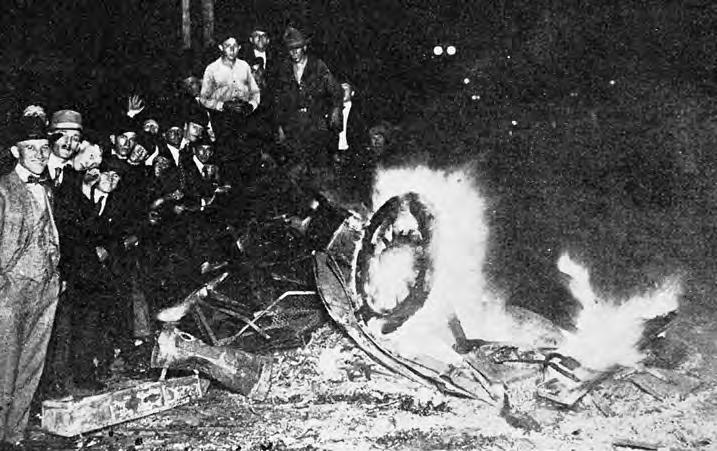
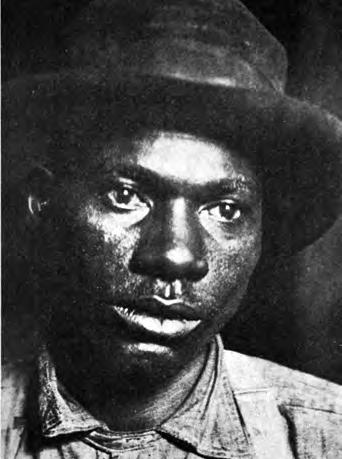
boarded a Sioux City and Pacific Railroad train at Sioux City and singlehandedly robbed a diamond merchant of $20,000 worth of precious stones. After his arrest and conviction for another crime several years later, the thief implicated Dennison as the mastermind behind the “Great Diamond Robbery,” swearing that half the loot went to the boss. Dennison was arrested, tried – and acquitted for lack of evidence.
In the early years of the 20th century, Dennison formed bonds with Omaha’s businessmen by personally directing city contracts, adjusting taxes, selling licenses, and playing fast and loose with the building codes. In time, two of his brothers and a nephew held important city jobs, as did
several saloonkeeper associates.
Dennison’s influence over both the courts and the law enforcement community gave him two major advantages. It provided him with the power to fix juries throughout the county, through bribery and violence. And it enabled him to open Omaha as a safe haven to the nation’s worst gangsters and hoodlums.
His ticket to power in City Hall occurred within the realm of mayoral politics in 1906. The Progressive Movement’s reform candidate advocated Prohibition, and for Dennison, who controlled all the liquor, gambling and prostitution in Omaha, this was unacceptable. He threw his considerable support behind the candidacy of the more socially tractable James “Cowboy Jim” Dahlman.
The easygoing Dahlman had indeed been a cowboy and ranch foreman in his native Texas. He had won a statewide riding competition when only 17. However, there was a dark side to Cowboy Jim. Before leaving Texas on the run, he had killed his sister’s abusive husband.
After the killing, Dahlman changed his name to “Jim Murray” and fled to western Nebraska, where he worked as a cowhand and range boss. In time, Dahlman discovered the courts had ruled the killing self-defense, and he reclaimed his name. He became a brand inspector and was elected sheriff of Dawes County.
Dahlman took to politics, eventually serving as mayor of Chadron, chairman of the Nebraska Democratic Party, delegate to two Democratic National Conventions


Heavily armed U.S. troops (above) patrol Omaha near 24th and Lake streets after the deadly violence that erupted in September 1919. Dennison ignited the chaos, allowing him to restore his puppet mayor, James Dahlman (right), shown holding a giant key to the city of Omaha. Dennison (left) is pictured in 1931 with his second wife, 18-year-old Nevajo Truman. Two years later, she filed for divorce.
BY
POLITICIANS, COURTS, AND POLICE, DENNISON MADE THE CITY A SAFE HAVEN FOR THE NATION’S WORST GANGSTERS AND HOODLUMS.
and Democratic State Chairman before his election at age 49 to the Omaha mayor’s office. A natural politician despite having little formal education – as he was the first to acknowledge – Dahlman’s rope tricks, tall tales and “aw, shucks” knack for simple talk appealed to the working public. And more vital to Dennison than his lariat twirling, Dahlman practiced a liberal, laissez-faire approach to government.
Dahlman’s live-and-let-live political philosophy ensured Dennison a problem-free run so long as Cowboy Jim stayed in office.
Dennison was so satisfied with Jim’s performance that he backed him in nine consecutive mayoral elections – eight of which Dahlman won, earning him the epithet, the “perpetual mayor.” Dahlman’s one loss introduced a progressive, reform candidate named Edward Parsons Smith.
Apparently, by 1918, a number of Omaha’s citizens had had enough of Dennison and backed the well-intentioned reformer. Dahlman was out, along with seven Dennison-owned city commissioners, including the police commissioner. As events would soon prove, Dennison was not a good loser, especially when money and power were at stake. In order to destroy the new mayor’s chances of success, Dennison helped instigate a race riot that stained Omaha’s reputation.
In 1919, the year following Dahlman’s single loss at the polls, Omaha boasted a population of nearly 200,000, some 10,000 of whom were African-American.
As the year progressed, the newspaper articles continued to stoke the flames of racial unrest. The situation was exacerbated by the return of the doughboys, who arrived home from World War I to find the national economy in a major slump and prices inordinately high. Jobs were in short supply, and rumors swirled that black men were standing ready to claim
set the courthouse aflame and slashed the fire hoses. They dragged Brown from his cell, and in a stunning display of brutality, hanged him, riddled his struggling body with bullets and dragged his corpse behind an automobile, finally burning his remains on a woodpile at 17th and Dodge.
Mayor Smith bravely attempted to stop the lynching, but members of the mob put a rope around his neck as well and hoisted him off the ground. Only the timely arrival of a carload of policemen saved the mayor’s life.
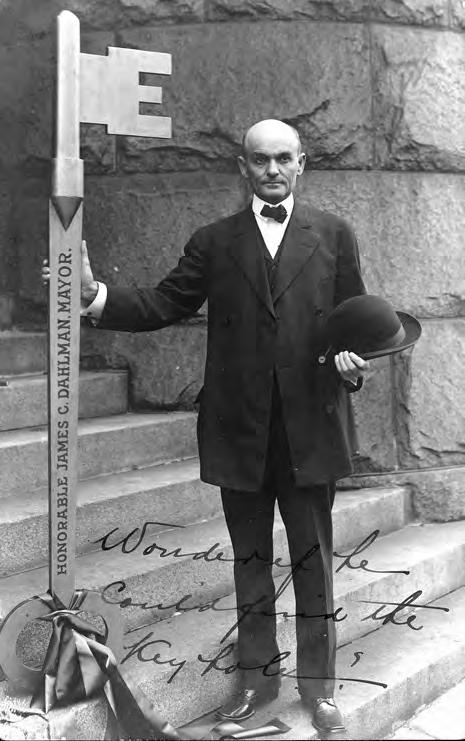
Throughout the year, at the instigation of Dennison, the Omaha Bee ran a number of false articles detailing assaults on white women by Omaha black men. The Daily News ran similar tales.
The stories served as not-so-thinly veiled attacks on Mayor Smith’s ability to maintain order. Smith was particularly vulnerable to political assault, having recently run on a platform that promised to “clean up Omaha.” He had defeated Dennison’s pet candidate, and now he would reap the whirlwind of the boss’s fury.
what jobs there were. The city was a powder keg, and Dennison held the match.
Inevitably, the powder blew. On the evening of Sept. 25, a young white woman was reportedly raped, and her crippled companion beaten and robbed. The police arrested a black man named Will Brown and locked him in the Douglas County Courthouse jail.
Three days later, inflamed by rabblerousers and newspaper articles, a mob of several thousand men broke into the jail,
Although Dennison was out of town when the atrocities occurred, it was alleged – and later acknowledged by turncoats – that he had not only aided in instigating the events, but he had sent his chief lieutenant to arouse and lead the mob.
By the time authorities set out to apprehend Dennison’s henchman, Dennison had spirited his accomplice out of Omaha. The police arrested a number of participants, however, and in the subsequent trials, the grand jury determined that several reported assaults on white women had been perpetrated by whites in blackface.
The grand jury further found that the attack “was not a casual affair; it was premeditated and planned by those secret and invisible forces that today are fighting … the men who represent good government.”
As in all previous attempts to hold Dennison accountable, no charges were brought against him, and no one was ever convicted of the savage murder of Will Brown.
Despite the negative publicity that associated him with the riot, Dennison reasserted his hold on the city, re-electing the cowboy in the next mayoral contest. The timing could not have been better for Dennison.
With the advent of Prohibition, the Old Gray Wolf established the “Omaha Liquor Syndicate” and formed alliances with other noted bootleggers, including Chicago’s Al Capone and “Boss Tom” Pendergast of Kansas City, Mo. Once again, Dennison maintained control of the police and the
city government, and with it, the illicit flow of booze in and out of Omaha.
Dennison was not without feeling, however, as evidenced by the death of his first wife, Ada, in 1922. By all accounts, her death grieved him terribly and caused him to turn a more attentive eye to his daughter and two grandsons.
By the next decade, the Old Gray Wolf suffered a series of setbacks. He had a stroke in 1932, and was indicted that same year, along with nearly 60 others, for violations of the Prohibition statutes. The trial ended in a hung jury, and as before, all charges against Dennison were dropped.
The trial, combined with the debilitating effects of his recent stroke, took a toll on his stamina. The legendary Gray Wolf walked away from the trial an exhausted old man. He suffered a collapse, and contracted and barely survived pneumonia.
The following year, his second wife, a local Omaha woman named Nevajo Truman, filed for divorce. Some pointed

to the vast difference in their ages as the cause of the rift. Dennison was 75, and she was 20. He had married her three years earlier when she was still in her teens.
And to put a final rock in his path, Dennison was roundly condemned by public opinion for the vicious slaying of a popular Omaha philanthropist, businessman and anti-crime crusader Harry Lapidus. No evidence connected Dennison with Lapidus’ murder, but Omahans speculated that Dennison had the most to gain from it.
Omaha finally had enough of Dennison. In the 1933 elections, with the new local radio station continually broadcasting a newly minted tune, “The Old Gray Wolf, He Ain’t What He Used To Be,” the opposition party swept into power.
Later that year, Dennison traveled to San Diego, Calif., to visit friends and regain his strength, and one suspects, to put some serious distance between himself and Omaha. In January 1934, Dennison
was injured in a car accident near Chula Vista, Calif. He suffered a cerebral hemorrhage, and on Feb. 14, he died. His funeral at Omaha’s St. Peter’s Catholic Church six days later drew a crowd of more than 1,000 mourners and curiosity seekers. More than 100 cars followed his funeral procession to Forest Lawn Cemetery.
Dennison’s death occasioned eulogies from local and national newspapers, some of which had tirelessly crusaded against him and now reminisced about the “good old days.”
The Omaha World-Herald credited him with “the qualities of natural leadership, of the fighter, and he was industrious and persevering.” The writer further mused, “Suppose he had been directed into a better path for a better end. … Our guess is that he would have gone far and won for himself a deservedly honored name.”
This story was originally published in the November/December 2011 issue of Nebraska Life

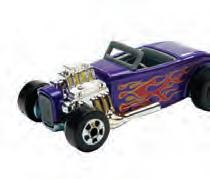

in a
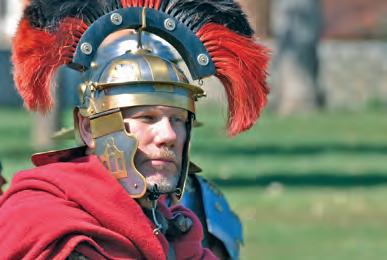
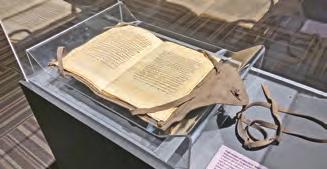

Explore ancient Rome, the Near East and much more. Special Bible exhibit shares the story of scripture from scroll to modern translations. Children’s interactive Little Kingdom now opened!
View rare artifacts from the ancient civilizations of Mesopotamia and Roman Empire! Young and old can experience the museum’s Little Kingdom interactive area. Uncover objects in an archaeological dig, “live” in an ancient house and “shop” a Roman market. Admission is FREE with donations always accepted.
ADMISSION IS FREE Check Facebook page for hours

Open Tues-Fri, 10 am-5 pm • Sat 1-4 pm claytonmuseumofancienthistory.org
ClaytonMuseumOfAncientHistory.org
1125 E 8th St • York, NE
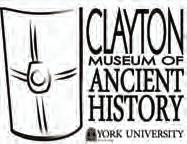
Located in the lower level of the Mackey Center on the York College campus Paid for in part by a grant from the York County Visitors Bureau

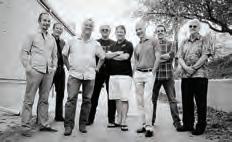


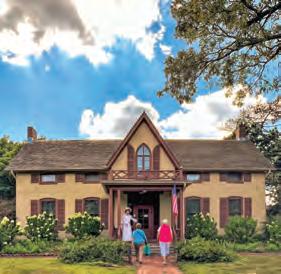
TOUR THIS 10 historic home built in 1869 for the Ware family. Guided by docents in period dress, learn about the family and the era Stroll through the Victorian Garden anytime, the perfect place for weddings or special events accommodating up to 100.
Daily: April 29-Oct. 31 Mon-Sat, 10-5 Sun, 1-5
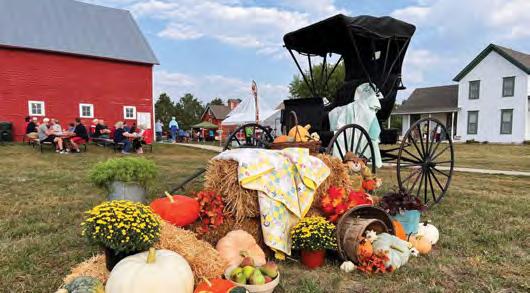


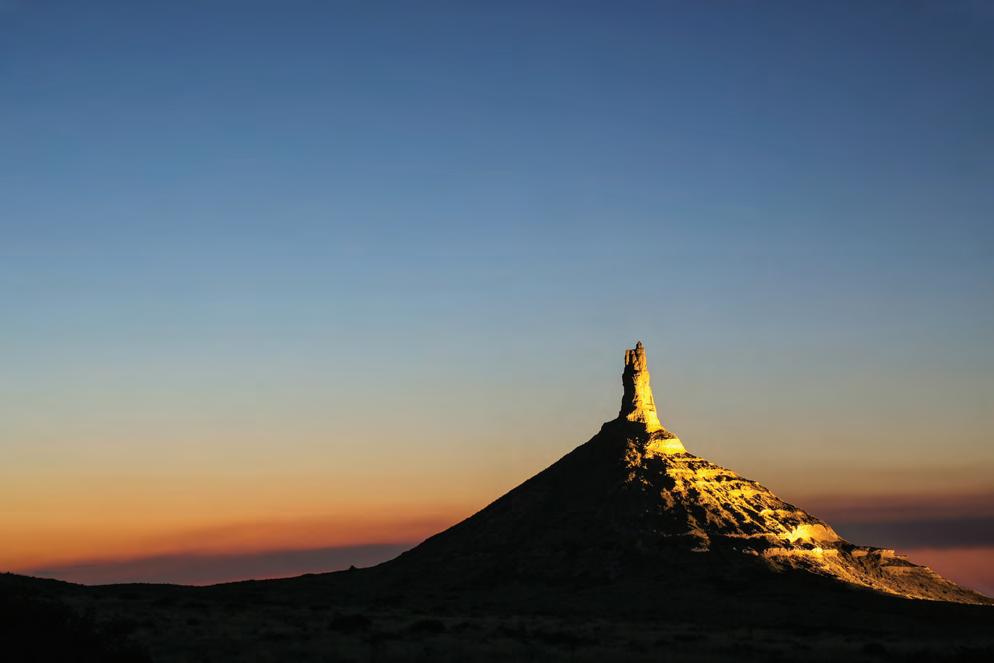
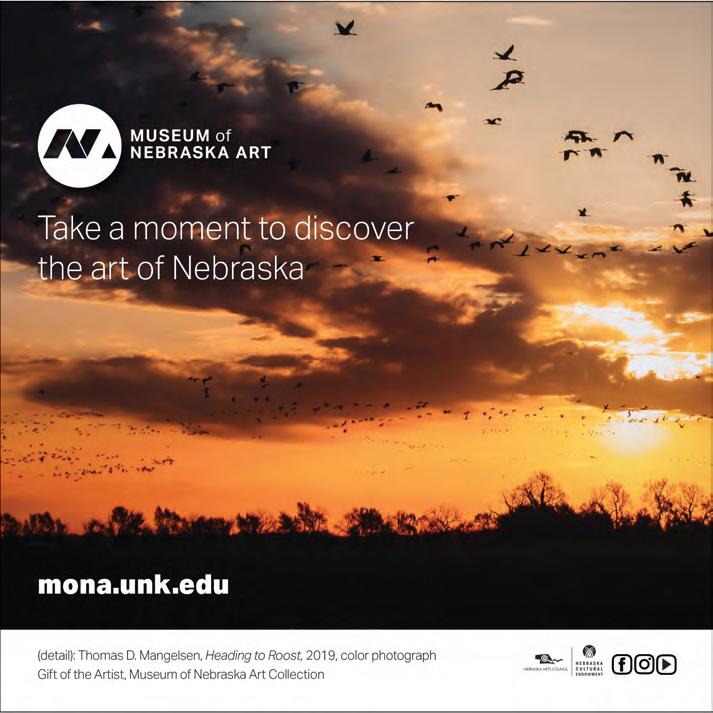
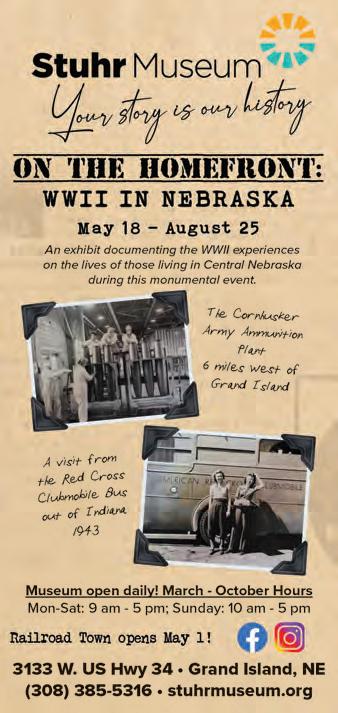
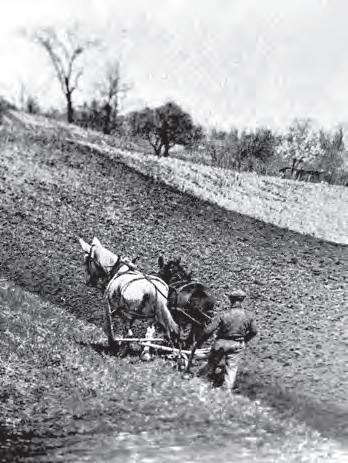
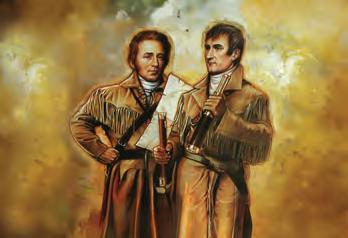
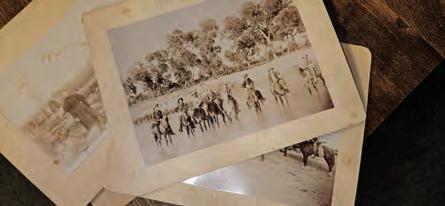


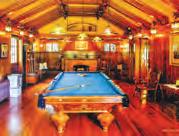

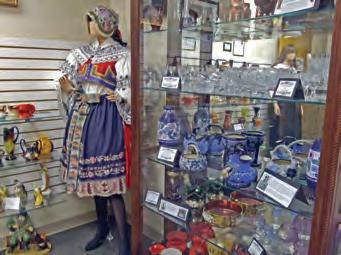



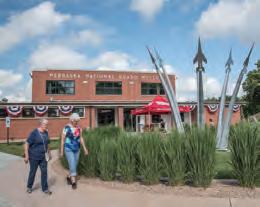
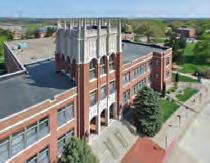




Fresh, lively, uplifting – this tropical fruit transforms mealtime.
This dessert feeds a crowd, so it’s perfect for summer parties, neighborhood potlucks and backyard barbecues. Make it even more festive by adding a dollop of whipped cream and some fresh berries. Be ready to share the recipe; the crowd will want that, too.
Preheat oven to 350°. Grease and flour a bundt pan. In a large mixing bowl, combine cake mix, pudding, eggs, sour cream, sugar, oil, and key lime juice. Mix until smooth.
Pour into prepared bundt pan. Bake for 40-45 minutes, or until a toothpick inserted in the center comes out clean. Cool in pan for 10 minutes before removing to a wire rack to cool completely.
Meanwhile, make glaze by whisking together the powdered sugar, lime juice and 2 tablespoons of cream. Gradually add remaining cream, as needed, until glaze reaches desired consistency. Spoon glaze over cooled cake before serving.
For the cake
1 box white cake mix
1 box (3.4 oz) instant vanilla pudding
4 eggs
1/2 cup sour cream
1/4 cup sugar
3/4 cup vegetable oil
3/4 cup key lime juice
For the glaze
2 cups powdered sugar
3 tbsp key lime juice
3 tbsp cream
Serves 12

For the filling and the topping
4 cups heavy cream, divided
1/3 cup sugar
1 tsp vanilla
1 package (8 oz.) cream cheese, softened
1 can (14 oz.) sweetened condensed milk
1/2 cup Key lime juice
1-2 drops green food coloring, optional
1/4 cup toasted coconut, optional
For the crust
1 package pecan shortbread cookies, crushed (about 2 cups)
1/3 cup butter, melted
1 pinch of salt
Serves 8
This pie is cool and creamy, tangy and sweet, and earns its “mile high” title. And you’ll stay cool because there’s no need for the oven. Add a bit of the tropics with a handful of toasted coconut for color and texture.
In a medium bowl, mix together the ingredients for the crust. Press into the bottom and up the sides of a deep dish, 9-inch pie pan. Refrigerate while you prepare the filling.
With an electric mixer, beat the heavy cream, sugar and vanilla in a large bowl until stiff peaks form. In a separate bowl, beat the cream cheese, sweetened condensed milk and lime juice until smooth. Add 1-2 drops of green food coloring, if desired. Fold 2 cups of the whipped cream into the cream cheese mixture.
Spoon the filling into the prepared crust and top with the remaining whipped cream. Sprinkle with toasted coconut, if desired. Refrigerate at least 4 hours, or until firm.
A drop or two of green food coloring is also optional. Without it, the pie is more white than green, and that’s definitely okay. So do whatever makes you happy.
This pie is always one of the first things to disappear at potlucks and backyard barbecues. And you’ll definitely get some requests for the recipe.
You can substitute regular lime juice for the key lime juice, but the pie won’t be quite as tart. You can always add a bit of grated lime zest to add more tartness though.
A regular graham cracker crust–or Nilla Wafer crust–also works well in place of the shortbread cookie crust. Even a traditional pastry crust is delicious!
Nothing says summer quite like this Mile High Key Lime Cream Pie. It’s definitely a must make when the weather starts getting warm!

Even with as little as two hours of marinade time, this flank steak makes an amazing filling for tacos, and is perfect for a steak salad.
Season the steak with one teaspoon of salt and pepper, to taste. Place the steak in a shallow glass pan. Add the remaining ingredients to a food processor or blender and blend until smooth.
Pour the marinade over the steak, turning to coat all sides. Cover and refrigerate for at least two hours and up to 24 hours.
Preheat a grill for medium high heat. Grill steak for four to six minutes per side, or until desired temperature is reached. Let stand for five to 10 minutes before slicing thinly against the grain.
Serve with additional sliced jalapeno, chopped cilantro, and lime juice, if desired.
1 1/2-2
pounds flank steak
1 tsp salt
Pepper, to taste
1/4 cup chopped fresh cilantro
3 tbsp honey
1 tbsp lime juice
1 tbsp lime zest
2 cloves garlic, minced
1 tbsp soy sauce
1-2 jalapenos, seeded and chopped
2 tbsp olive oil
Serves 4-6


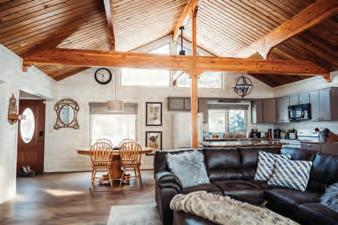



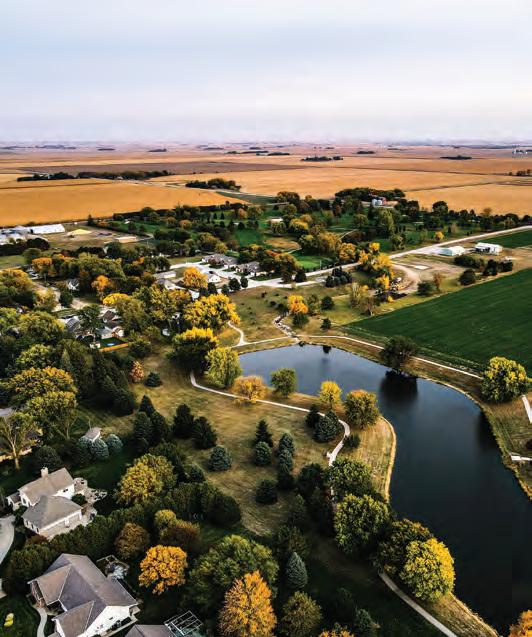


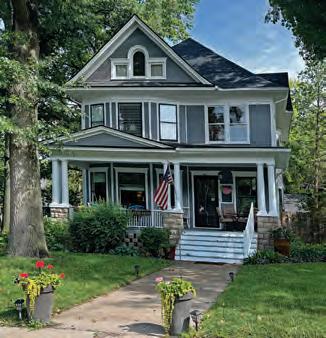






Nebraska poets watch the horizon for the wonder of weather, threatening or welcome, preferring to experience it nowhere else but in their homeland.
Roger D. Anderson, Omaha
Winter is the firstborn … the eldest, the big brother, the bully, loud, boisterous, a cold demeanor sometimes arrives too early or without a formal invitation other times overstays his welcome and becomes a bore but occasionally known to show his serene side with surprising charm and grace some would even say he can be quite handsome when dressed in one of his finest white suits other times briefly warming for a moment, if only just to tease
Spring is the youngest of the family Mother’s favorite she is the meekest never wanting to upset anyone certainly not her eldest brother even though he can be an annoyance. she has a delicate and exceptional beauty beyond compare she is a wisp, flitting in and out of the party very quickly, much too quickly, all the guests wanting her to stay and visit longer
Summer is the other brother the youngest of the two boys he can be a bit of a lazy sort at times a reckless youth at other times causing some destruction without thinking but just wanting to be a fun guy have a good time, nothing more, nothing less
a bit of a hot temper though when he doesn’t get his way
And then there is Autumn the eldest of the two girls she ages very well and so proud of her limitless wardrobe of lovely and flowing colorful gowns she exhibits a beauty and a grace all her own, like her sister, she is meek too never standing up to her big brother when he sometimes rudely arrives too early
Strange though, that all four siblings have never gathered at the same time only two ever seem to have the opportunity to visit with each other and even then, just briefly each needs their own space they must have learned that from Mother
Steven M. Lukas, Minneapolis, Minnesota
Wind-driven snow swirls through the grove across from our small farmhouse with only two heated rooms. Hunkered behind the wafer of an overturned tree, I listen to a north wind howling overhead through branches stripped bare of a summer’s growth.
Peeking around protection of a sacrificial ash, hackberry, or elm (what does a 10-year-old know about species)
I face into gusts that sweep across once acres of Milo turned under last fall. I watch drifts hang back and wrap themselves around tree trunks to await spring melt, while others break into the clearing and disappear excitedly over rolling hills. In the becoming darkness I know it’s time to move towards fading lights, lest I be missed.
David Bowe, Winston-Salem, North Carolina
The wind ever restless continues to press ‘cross plains where schooners did sail. Winter retreating, the snow now depleting, spring’s presence beginning to tell.
Soft clouds in the sky on the wind hurry by as though in a race competing. Spring sun warms the day finds children at play “Hop-scotch”; “Captain May I” the setting.
Farmers long restless turn attention to business readying lush soil for new seeding. A life’s work of hard labor, harvest’s yield just to savor, with harsh Nebraska weather competing.
Loup and Platte give way to ice freshly melted that day; wildlife abounds on aged banks. Where Pawnee hunters did roam seeking food for their home –for this land, richly blessed, we gave thanks.
Spring fever now held us from youngest to eldest, teachers struggled to hold our attention. “The outdoors may be calling but, David, your grade average is falling!” Sister Robertilla found it prudent to mention.
Baseball glove from the closet oiled and ready for sandlot, Saturday mornings I’d rocket from bed. We’d scratch out a baseline and make like the Big Time with “The Clipper”, and “Pee Wee”, and “Ted.”
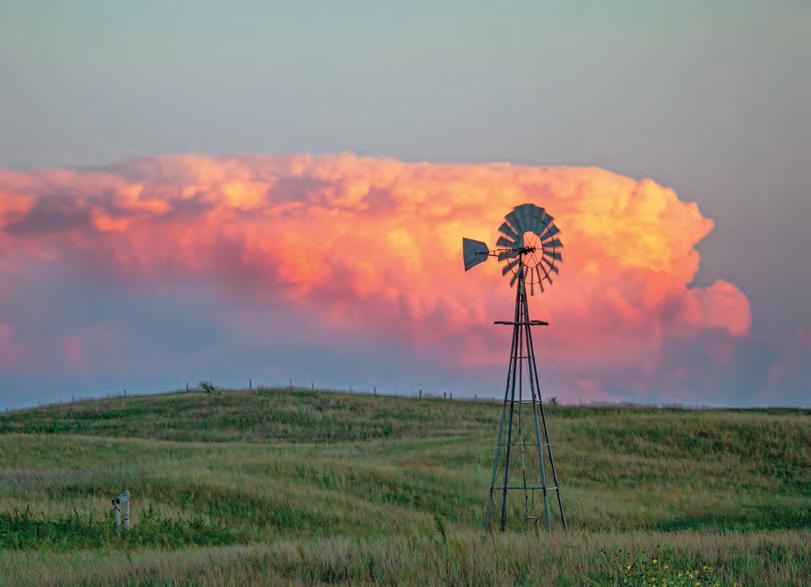
Shooting marbles was Spring fun where newcomers were undone, my “Cats Eye”: I’d fire like a shot. “Knuckles-up!” was the call, and I’d scatter them all on my way to winning the pot.
And this was my springtime with no room for “down time,” for each day to this lad was too dear. When the call of the outdoors did battle with school doors … and, “occasionally” I wouldn’t appear.
Carol
Lukas Franssen, Steelville, Missouri
The afternoon air was so heavy and oppressive that we welcomed the first drift of cool air until we saw the massive bank of boiling clouds in the west.
Tree tops began to whip about and we were showered with leaves.
SEND YOUR POEMS on the theme “Coming Home” for the July/August 2024 issue, deadline June 1, and “Fertile Ground” for the September/October 2024 issue, deadline July 1. Email your poems to poetry@nebraskalife.com or mail to address at the front of this magazine.
Our clothes on the line went horizontal in alarm Shirt sleeves reached out as if seeking an escape while the sheets snapped and popped like and old John Deere tractor.
This prelude of chaos is forecast enough; we know what’s coming!
We all scramble. Squawking Chickens get shoved into the coop. Bawling Cattle instinctively bunch up. Windmill fans are secured; and we race to the root cellar for our own safety.
One final look west and we see the funnel develop like a gray finger writing with a careless script its verdict on the land.
And then … just as quickly … It’s over.
Fine dirt sifts over us as we cautiously lift the cellar door and climb out. In amazement we find debris not destruction! Prayerful gratitude washes over us as we stand in numb relief.
In time we slowly begin the clean up. We are, after all, Nebraskans and this is home.
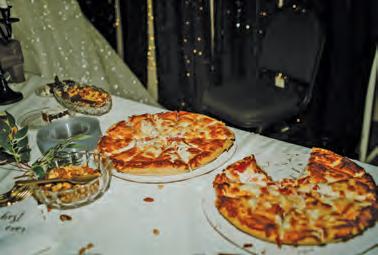


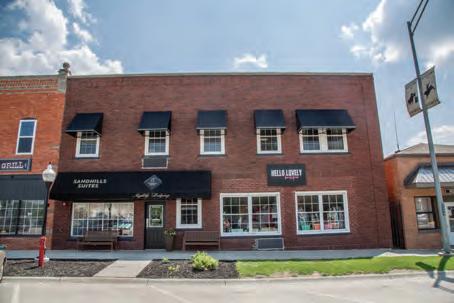


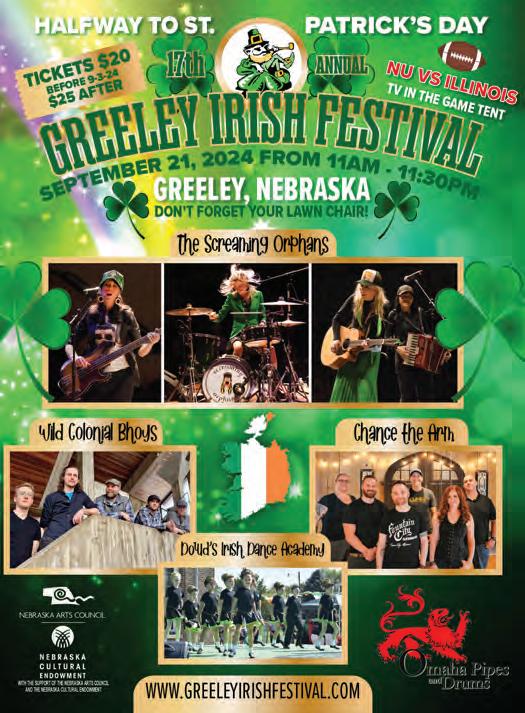
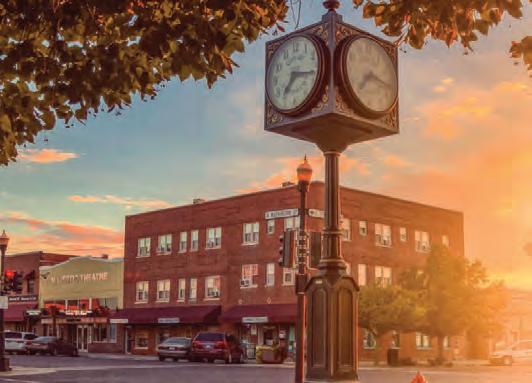

On Thursday nights, May through August, from 7 p.m. to 10:30 p.m., the Henry Doorly Zoo & Aquarium, voted best in the nation two years running, provides ticketed guests adults-only, after-hours access to select exhibits. Owen Sea Lion Shores provides a 40-foot-long underwater viewing window that showcases wildlife from the Pacific Northwest coast. To reach Asian Highlands, guests pass through a replica of a Himalayan ruin.
Capacity is limited to 5,000 attendees. Last admission to the event is at 9:30 p.m. Proceeds go toward animal health, wellness and enrichment programs, as well as conservation efforts worldwide.
Food trucks participating in past Late Nights have included Deviled Egg Co., Hawk’s Pizza, Javi’s Tacos, J’s Smokehouse BBQ, La Cabanita Tacos and The Corndog Company.
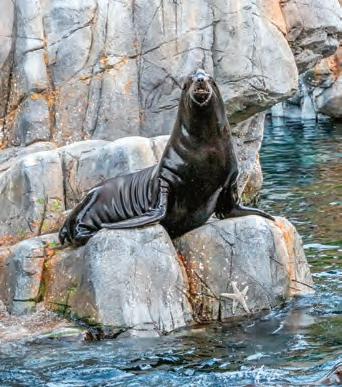
Chino, a California sea lion, charms crowds who visit the zoo’s new Owen Sea Lion Shores. The exhibit features a kelp forest and wave chambers.
MAY-AUGUST, OMAHA
Kenefick Park
Two huge Union Pacific locomotives –the largest diesel electric, and the largest steam driven – stand side by side.
100 Bancroft St., (402) 346-4002
Plank Seafood Provisions
For a pre-zoo meal a little healthier than pizza or corndogs, Plank offers a menu that transports you, like the Owen Sea Lion Shores exhibit, to the coasts –including the coast of Chile, source of its Southern King Crab.
1205 Howard St., (402) 507-4480
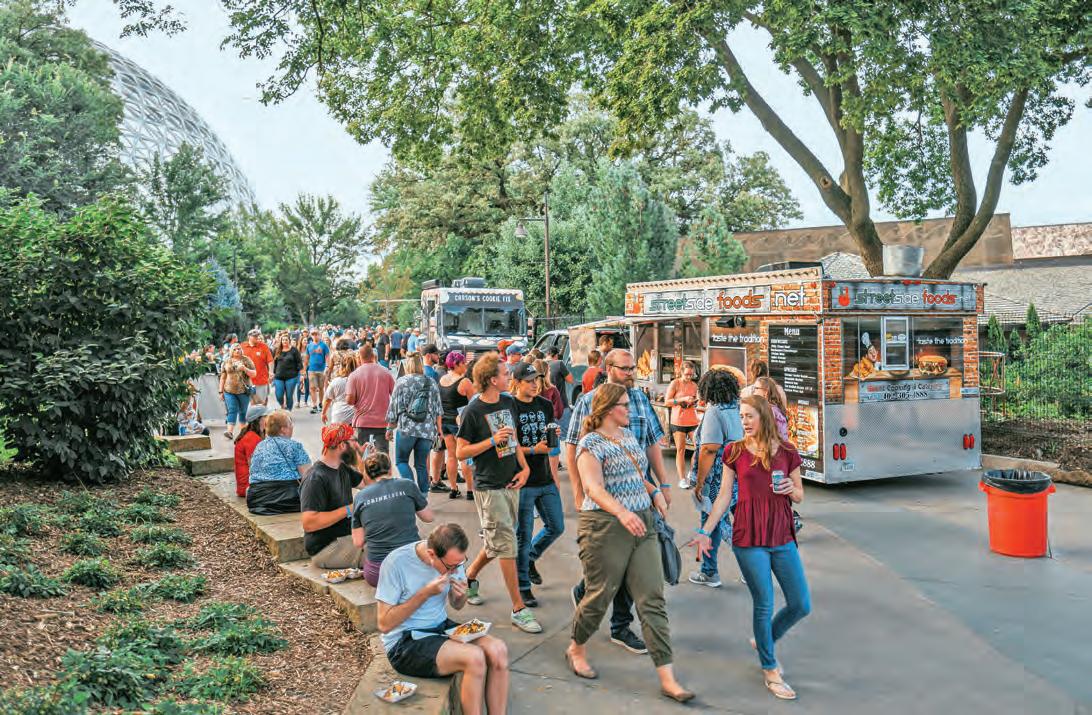
MYSTERY AT THE MANSION
MAY 17, NEBRASKA CITY
Murder in Sin City is a play in which the audience participates. Upon entering Arbor Lodge Mansion, participants receive assigned characters in a murder mystery. Whose secrets will be revealed? The mansion is a 52-room neo-classical home within Arbor Lodge State Historical Park and Arboretum. (402) 873-8740
MEMORIAL DAY CEREMONY
MAY 27, ALLIANCE
The Nebraska Veterans Cemetery at Alliance hosts its annual Memorial Day program, beginning at 1 p.m. Cemetery Manager Jim Goodwin recognizes the service members interred at the cemetery. St. John’s Brass performs patriotic music. (308) 763-2958
50TH ANNIVERSARY OMAHA
SUMMER ARTS FESTIVAL
JUNE 7-9, OMAHA
The art on display in Aksarben Village will include chalk art on sidewalks, and photo-op murals. Artists invite festivalgoers to observe their creative process and interact with them. Food and music will also feed the soul. 67th and Center Sts., (402) 345-5401
CLARKSON CZECH DAYS
JUNE 28-30, CLARKSON
The weekend celebrates all things Czech. Friday kicks off with a Polka band. Saturday includes a Czech dinner, 11 a.m.-1 p.m.; polka dancing 1-5 p.m; and Czech baking, 1-3:30 p.m. Sunday includes a polka Mass and presentation of the Nebraska State Czech Queen. (402) 649-8777


Answers from pages 20-21
GENERAL
1. Honeybee
2. Kool-Aid
3. Chimney Rock
4. Agate
5. Ornate
MULTIPLE
CHOICE
6. c. Tree Planters’ State
7. b. It flew upsidedown over the capitol and nobody noticed
8. a. Giant goldenrod
PHOTOS
9. b. Lincoln
10. a. Horse-drawn carriage
TRUE OR FALSE
11. False (other states have state soils)
12. True
13. True (Archie stands 15 feet, six inches)
14. True
15. False (the northern cardinal is the state bird in seven states)
Page 20, top: Lied Lodge and Arbor Day Farm in Nebraska City.
Page 20: Western meadowlark, Ft. Niobrara National Wildlife Refuge.
Page 21: Field of goldenrod in Boyer Chute National Wildlife Reserve.




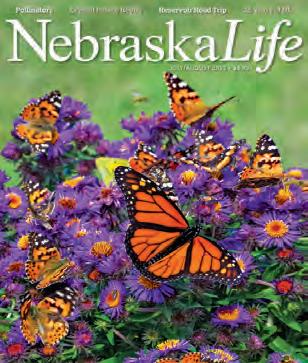


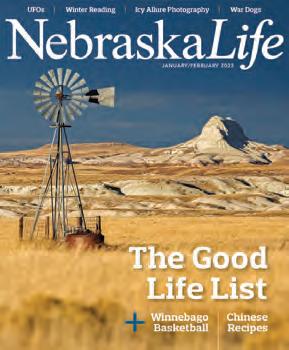


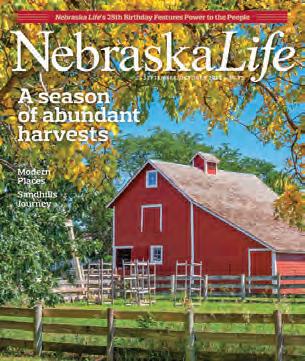

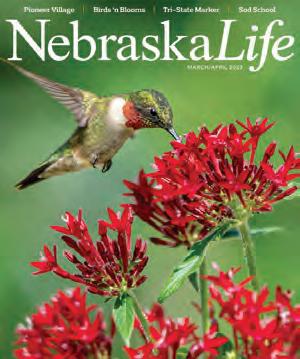

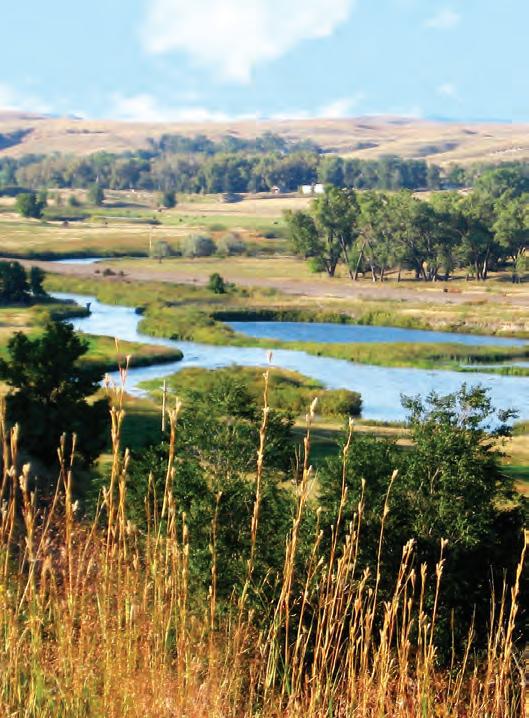




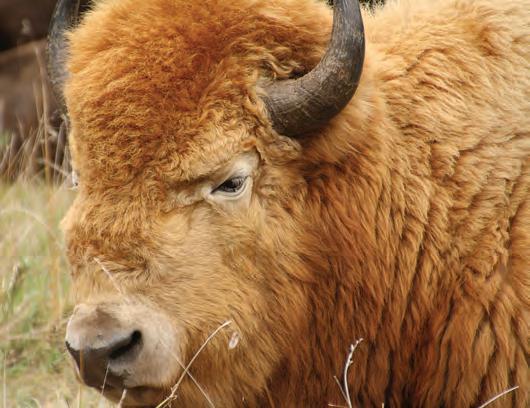







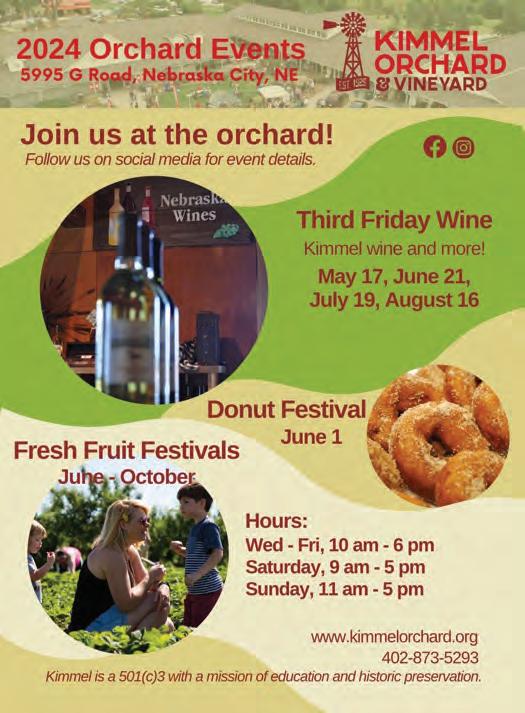




















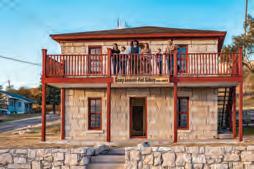






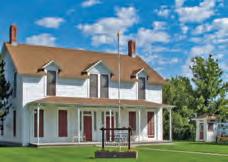

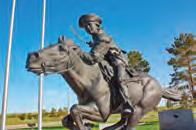













by ALAN J. BARTELS
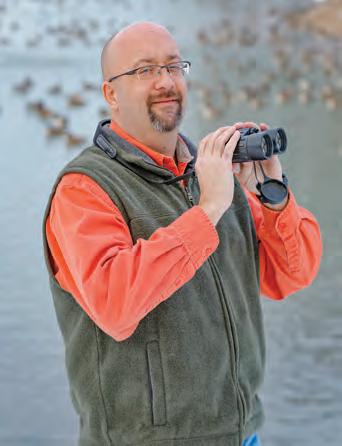
Masses of cranes calling what seemed like a celebratory cacophony soared against a backdrop of burnt orange sky.
The sandhill cranes have come and gone, and on their wings came spring in Nebraska. Each March and April, flocks of tourists migrate to Nebraska, too, for the world’s largest gathering of cranes.
The thickest throngs of Craniacs gather near Grand Island and Kearney along the “Big Bend” of the Platte River. Grand Island claims the “best seat in the house,” and Kearney is “Sandhill Crane Capital of the World.” The promotion works; thousands of people from around the world head to the area for guided riverside tours in viewing blinds at two places: the Crane Trust Nature and Visitor Center west of Grand Island near Wood River, and Audubon’s Rowe Sanctuary south and across the river from Gibbon and east of the Kearney exit on Interstate 80.
Reservations for viewing blind spaces fill up fast, and normally quiet rural areas grow loud with tours, educational programs, art shows, and other celebrations. I recently discovered a spring crane migration spectacle that is muted in many ways by comparison but can be just as enjoyable.
In March 2022, while working on a travel book about the Sandhills, I made the three-and-a-half-hour drive from my home to Garden County. I was hoping to photograph an imagined scene – the North Platte River at sundown, sandhill cranes overhead, and a handful of people gathering for the experience.
The sky was draining from cobalt blue to amber when I reached Lewellen, a village of more than 200 people in Garden County. Nearby is Lewellen’s claim to historical significance – the site of the Battle of Ash Hollow, where 600 U.S. troops invaded a Brule Sioux encampment in retaliation for an earlier massacre of U.S. soldiers.
Learning from an author friend that cranes gather on the river nearby, I worked my way south. The cranes were already staging in the river, and there was one vehicle pulled over; I could see binoculars protruding from the driver’s side window. We exchanged waves and I continued down the gravel road.
A mile or so later I pulled over near the old Lewellen bridge – 710 feet of multiple-span Pratt pony trusses completed in 1927 by Western Bridge and Construction Company – and walked to a small public parking area. A woman I hadn’t seen sitting in the riverside weeds startled me when she called out, “Hello.” We were alone together with the birds. Groups of ducks and geese seemed to flap in every direction as the sun continued its downward arc. Sorties of small shorebirds touched down in the shallows. More visitors soon joined us.
A carload of people parked and hiked toward the bridge. I walked over to explain what I was up to.
The visitors were members of a Lakota family from South Dakota. I learned that the cranes, the Sandhills, and the North Platte River are sacred to their people.
Our conversation ended when masses of cranes calling what seemed like a celebratory cacophony soared against a backdrop of burnt orange sky.
I crawled back into the weeds and eventually captured the photo I had traveled there to take. The six of us had thousands of cranes to ourselves. The birds were still pouring into the North Platte River as I headed for home.
Nebraskans who take the less-traveled road have the unique opportunity to view world-famous cranes while also hearing and learning from new friends out West.
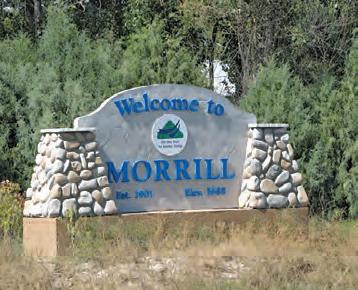

Morrill Village has everything a family vacation needs. Just 20 minutes from the bustle of Scottsbluff, you can hit the range at the public 9-hole golf course, go for a dip at the community swimming pool, stroll through the city park or pick-up a tennis match at the courts. And don’t forget to pack your tackle box and poles for some fishing at the sand pit ponds!






Explore the heart of Nebraska’s fine art at Main Street Gallery.


93% of 2022 grads found work or continued their education.
89% of 2022 employed grads are working in Nebraska.
82% of 2022 grads continuing their education are doing so in Nebraska.


Sandhill cranes engage in a timeless ritual of bonding along the Platte River

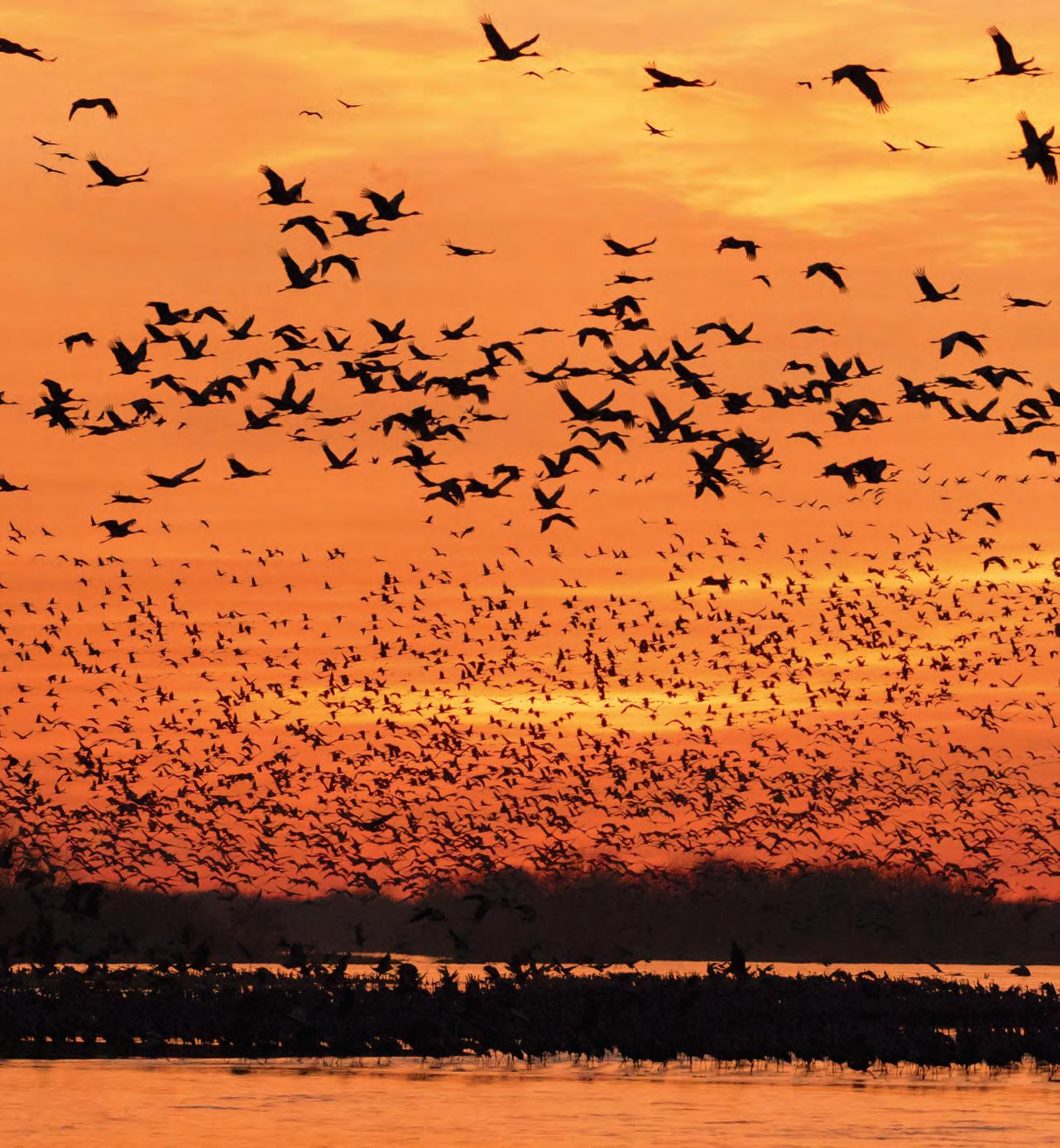
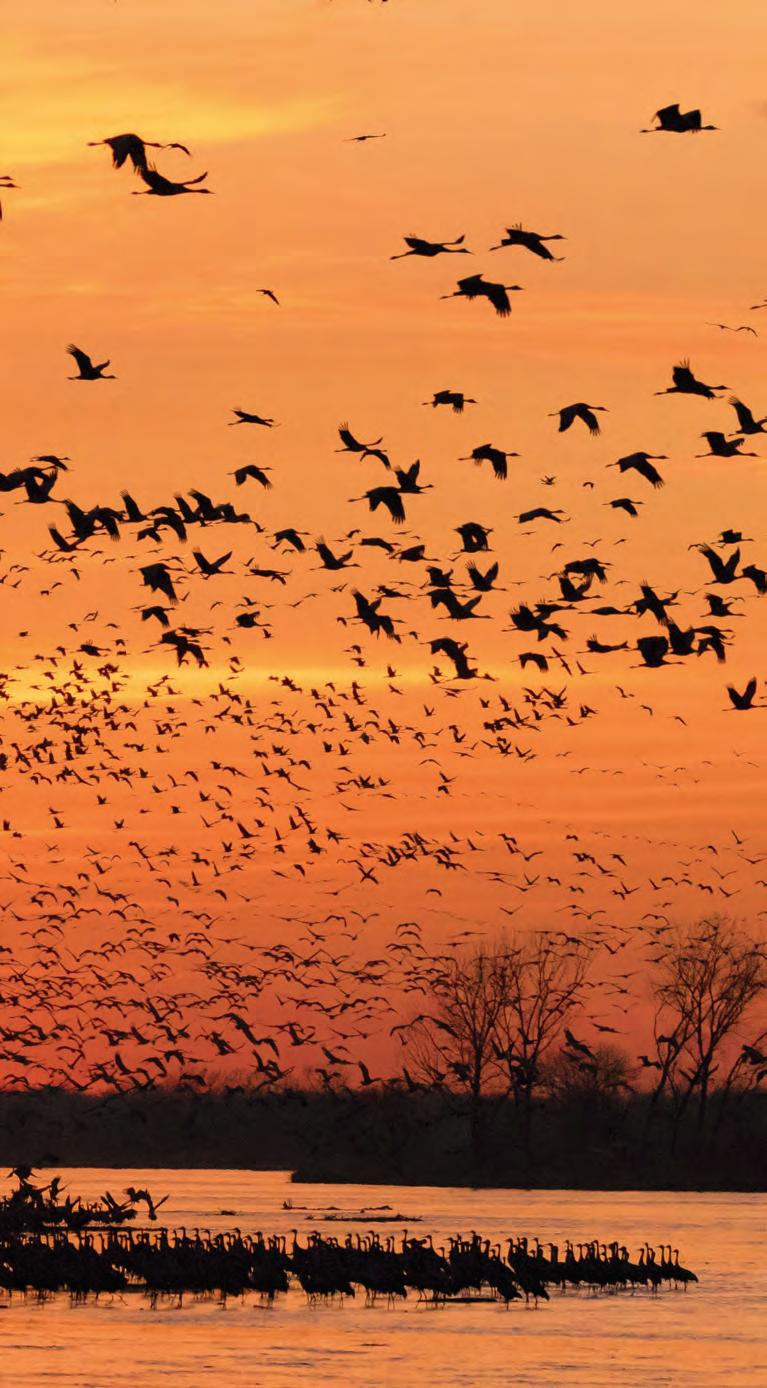
story by TOM HESS
by RICK RASMUSSEN
With springtime comes a beautiful dance along the Platte River, pairs gathering by the thousands, creating and strengthening their bonds for lifelong partnership.
It is a season when sandhill cranes display what commitment can look like, what couples can aspire to.
The male sandhill crane displays his desires for all to see: unashamedly, single-mindedly leaping and spinning for an audience of one, the crane raising his long wings, seven feet across, as he approaches the female. She spins, hops and moves closer, too. They coil their necks in a position that recalls Torvill and Dean entwined in their Sarajevo Olympic ice dance 40 years ago.
Male and female cranes both issue vibrating cries – call and response, and in unison – a rolling “r” sound through their long windpipes. Their song rises from the gut, echoes across the Nebraska landscape and joins the symphony of thousands.
Male and female are both gray-bodied with crimson crowns. To our eyes, it may be difficult to differentiate between the pairs, until their performance begins. The male will hold his head and beak straight up, while the female’s will be angled
world’s largest gathering of sandhill







Each morning along the Platte River, sandhill cranes engage in pair bonding, a ritual likened to “dancing.” This behavior strengthens the bond between male and female as they move in tandem.
lower. Her call will sound two notes to the male’s singular cry. Together, they will initiate a dance to establish their newfound bond.
The pairs will rejoice in each other as cranes have done for millennia. A fossilized crowned crane discovered at Ashfall Fossil Beds near Royal dates back more than nine million years, proof of an ancient pattern of visitation to this land.
Cranes pair up as early as age two. The annual spring visit to the Platte River, the largest congregation of sandhill cranes on earth, offers young and single cranes the opportunity to find a mate. Performances spread out across the river as the cranes call, bow and dance in pairs.
These presentations are on display each spring as returning pairs reinforce their bonds and new pairs begin their first dance along the river. Nebraska is one stop along their journey to nesting grounds in Alaska, Canada and Russia. Most pairs can be seen returning the next year successfully fledging two young.
This bond lasts a lifetime, an average of 20 to 30 years, reinforced every spring season along the Platte. When mates die, males remate quicker than females, but continue in the courtship and commitment to their new partner.
These graceful displays have inspired human dances such as “The Crane,” as recorded by first century Greek philosopher Plutarch. Aboriginal tribes in Australia still perform a crane dance – spreading their arms then raising and lowering, the dancers spin around each other and mimic the crane’s call from deep in their throats.
Year after year, the Platte River will host this reunion of thousands of pairs and encourage this tradition to never end.
Sandhill cranes travel together on their long journeys, sometimes all the way to Siberia.



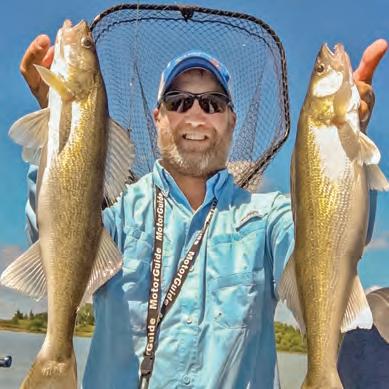
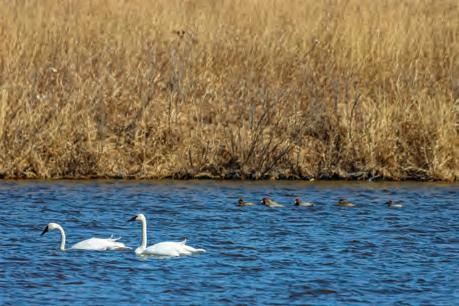





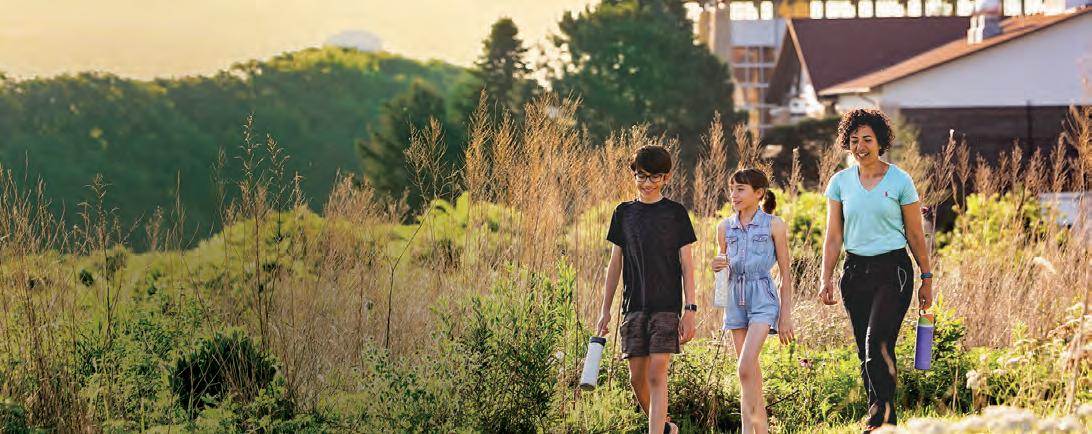
Discovery awaits at Arbor Day Farm. Whether feasting on local barbecue at Porter’s, exploring the one-of-a-kind Treetop Village®, or relaxing under the soaring timbers of Lied Lodge, there’s something for the entire family at Arbor Day Farm in Nebraska City.
Start planning your getaway at arbordayfarm.org.
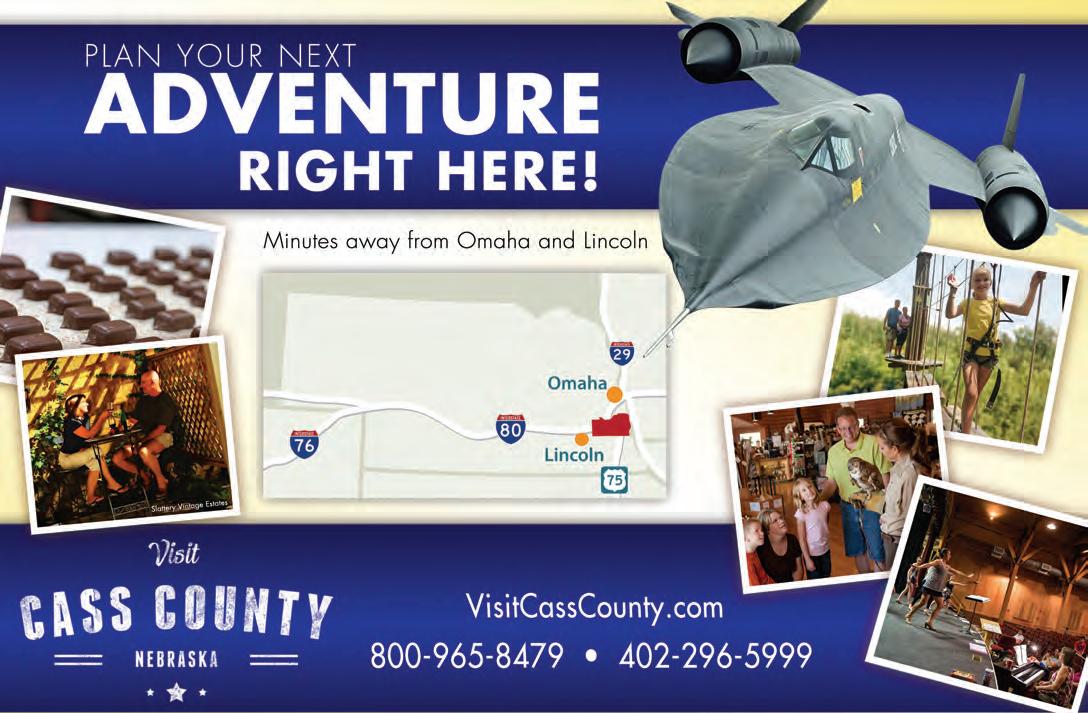

The Stromsburg Swedish Midsommar Festival started in 1953 and is still going strong. Stromsburg was settled in 1872 and given the title “Swede Capital of Nebraska” in 1966.
The Swedish heritage of those founders is shared with fun for all ages during THE THIRD WEEKEND IN JUNE. Come enjoy the food, crafts, parade, car show, fun run, smorgasbord, live entertainment and the crowning of the new king and queen.
All entertainment during the festival is free. Most events will be held in the city square around the recently renovated 100-year old bandstand and new stage. Plan to bring your lawn chairs and enjoy. A carnival and midway will be happening Friday and Saturday.
To learn about more events and details, Call 402-764-5265 or visit www.theswedishfestival.com









Friday, June 14
4:30–7 pm Chicken BBQ
5-10 pm Taste of Sweden, food
5:30–6:30 pm
Kid’s entertainment Overall Buddies
6:45 pm Swedish dancers, local children
7:15 pm Crowning of the King and Queen
8:30 pm Entertainment: Lincoln Continentals (men’s chorus)
Saturday, June 15
7 am
Swedish pancakes
8 am 5K-10K-1M, Earl “Helge” Byleen run/walk
8 am–8 pm Taste of Sweden, food
9 am–4 pm Midsommar market arts & crafts
11 am–1 pm Swedish smorgasbord
11:15 am State sanctioned children’s tractor pull
Noon–4 pm
2-3 pm
4:30 pm
Edgerton Explorit Center from Aurora
Library: Swedish Kurbits painting: An intro
Swedish dancers, local children
4-7:30 pm Firemen serving BBQ & brats
6 pm Parade “Swedish Christmas in June”
7:30 pm
Sunday, June 16
Entertainment: Columbus Jazz Orchestra
11 am–4 pm Car, motorcycle and tractor show
11 am–6 pm Anna street trolley, ice cream treats Noon Cornhole tournament
5 pm Kevin & Heidi Cheng, musicians





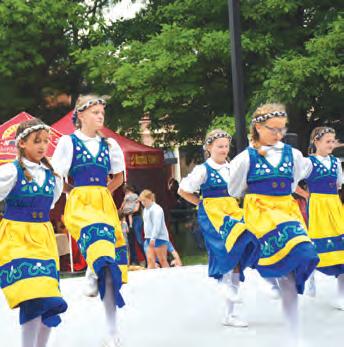

Invites you to experience the Swedish Midsommar Festival Swedish Foods • Parades • Carnival Entertainment • Crafts • Much More!
June 14-16, 2024

To keep up to date check www.stromsburgchamber.org


www.therosecoloredglass.com
